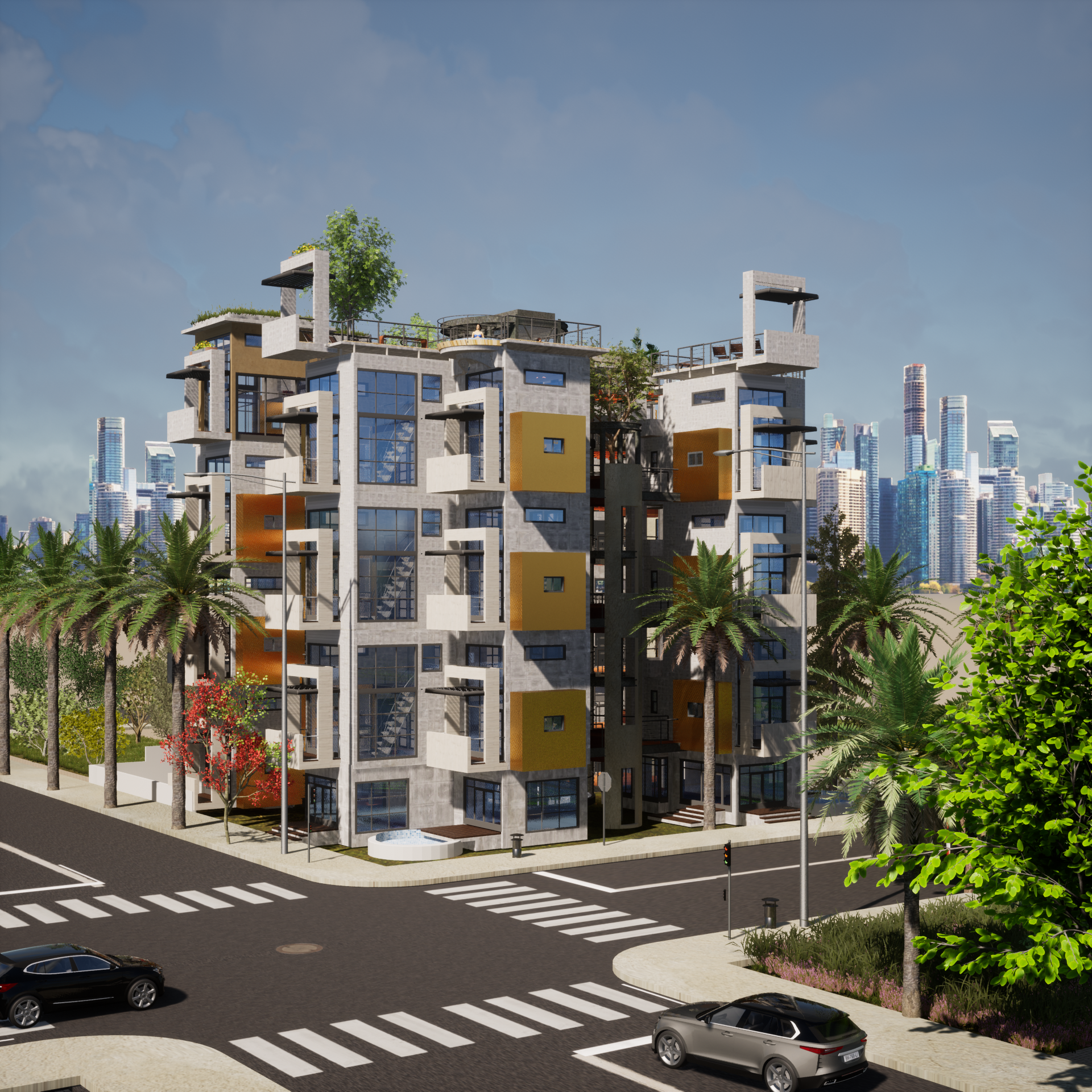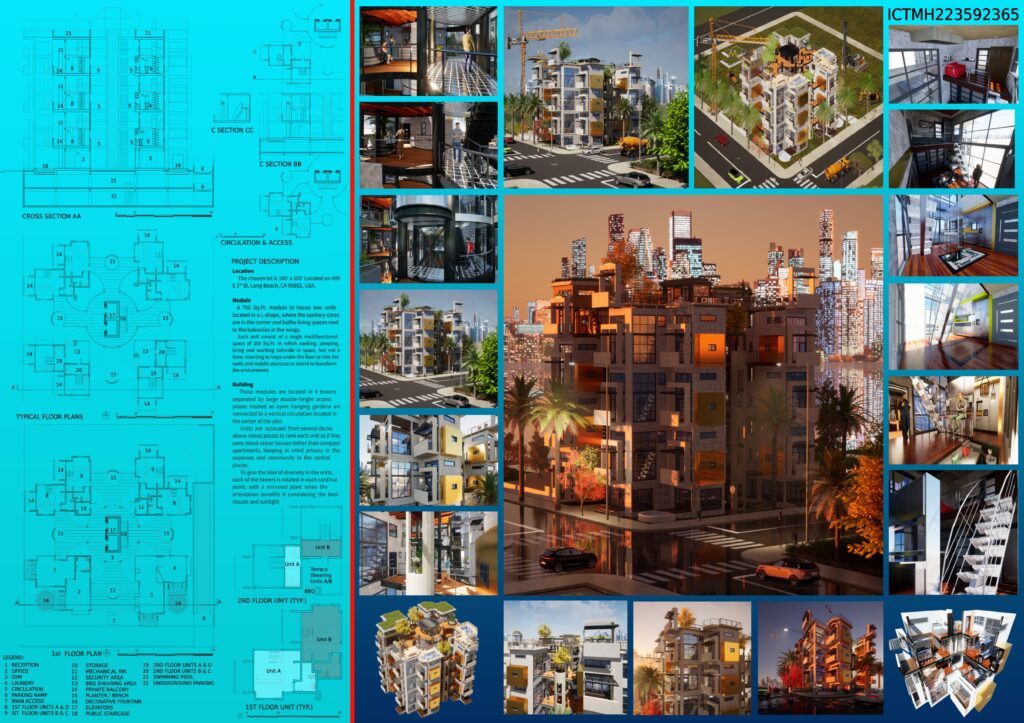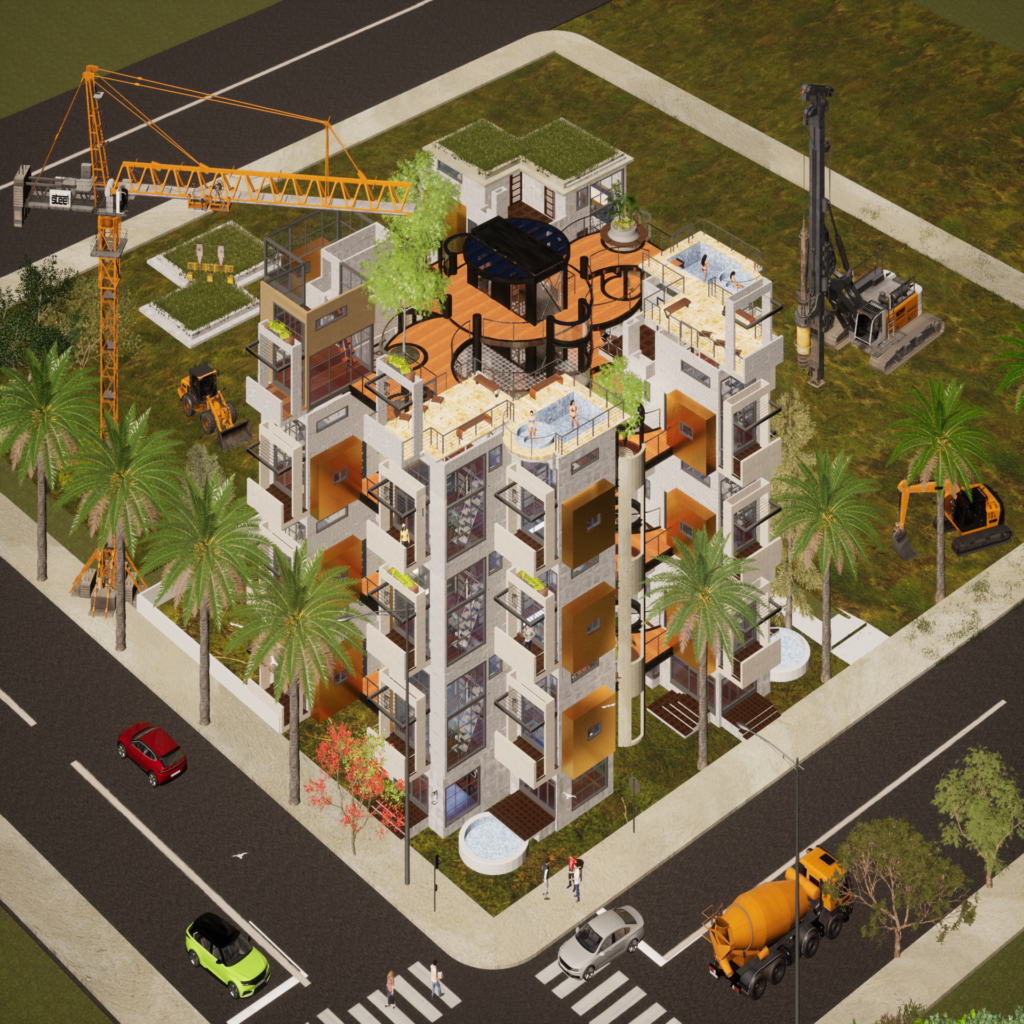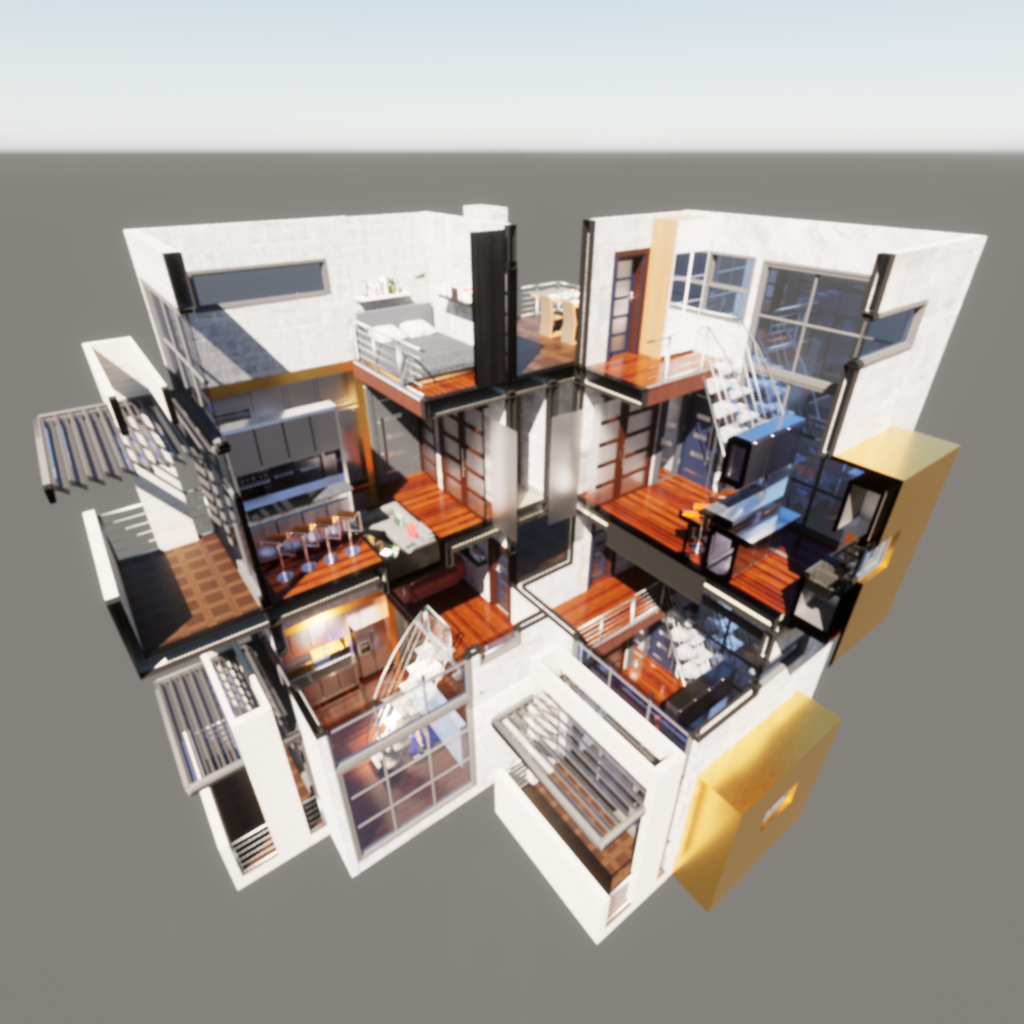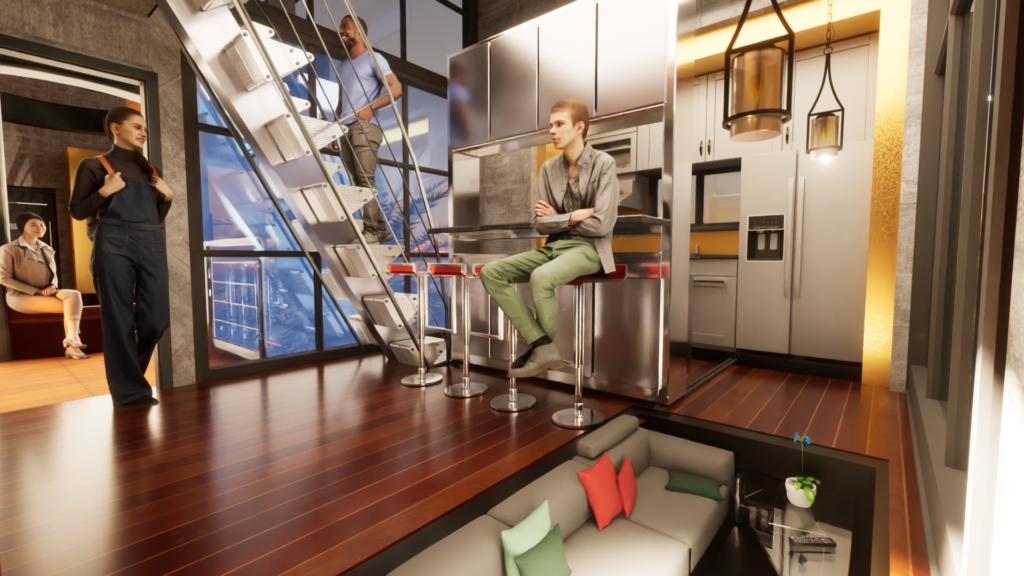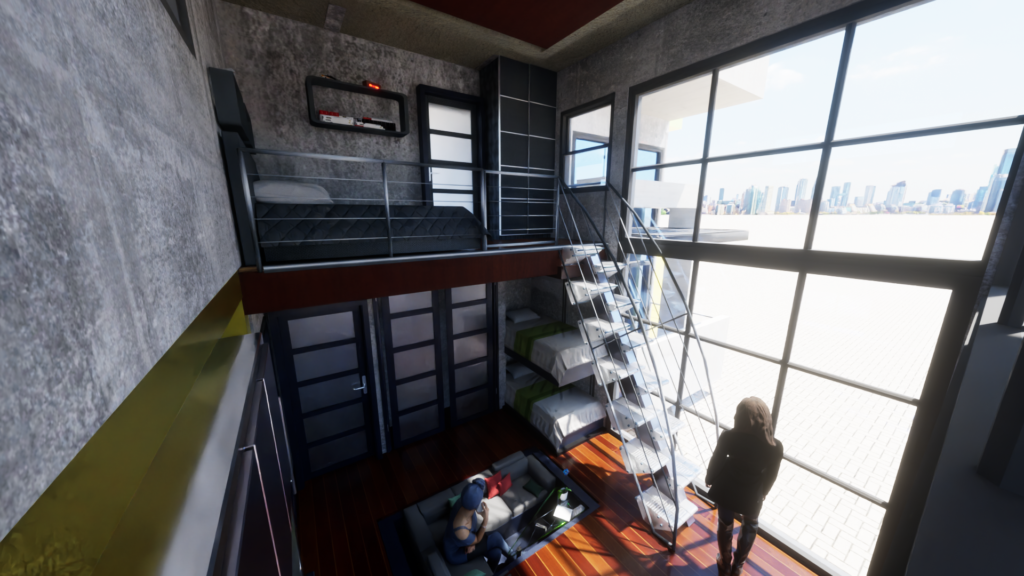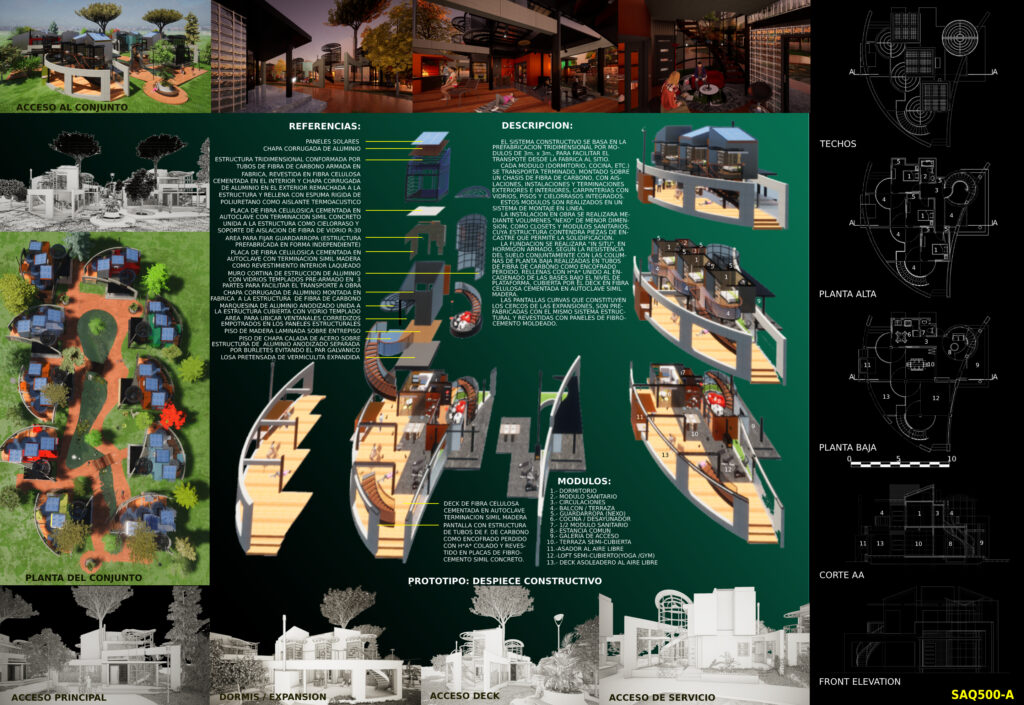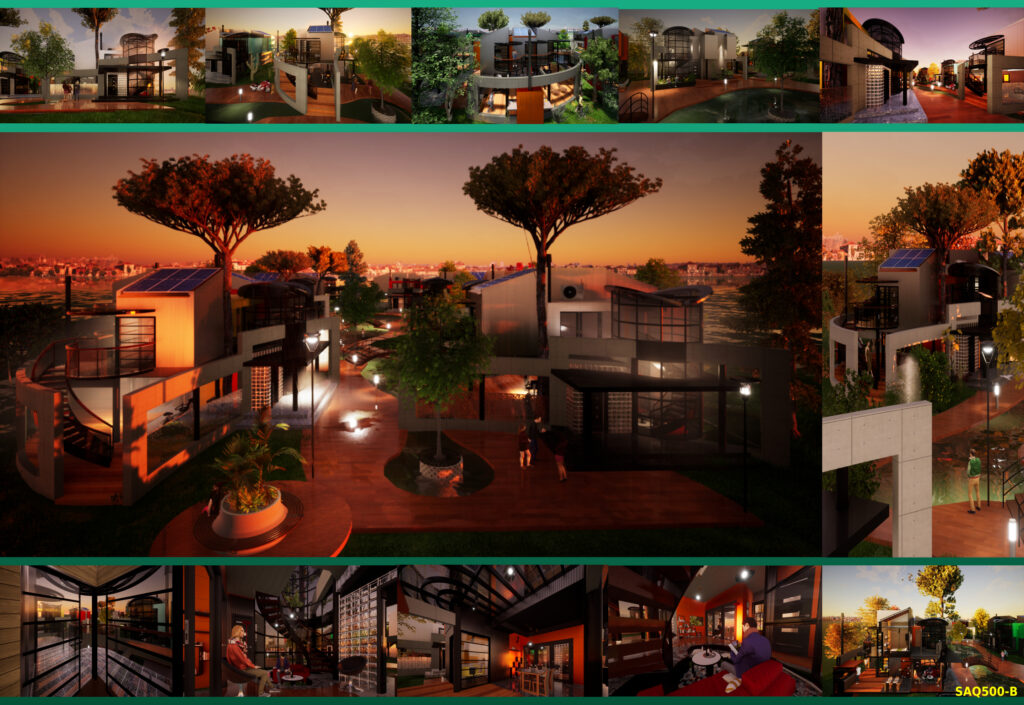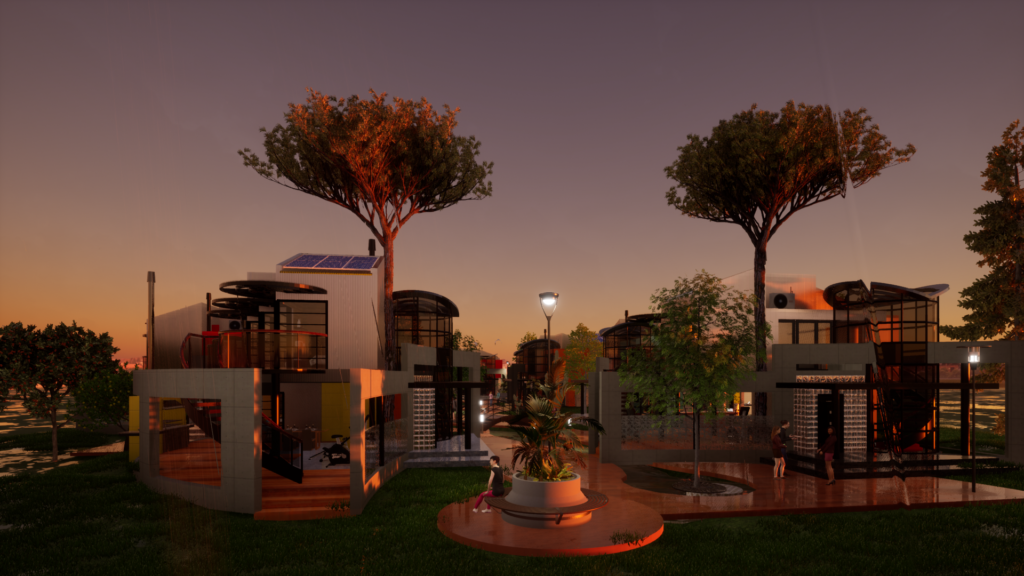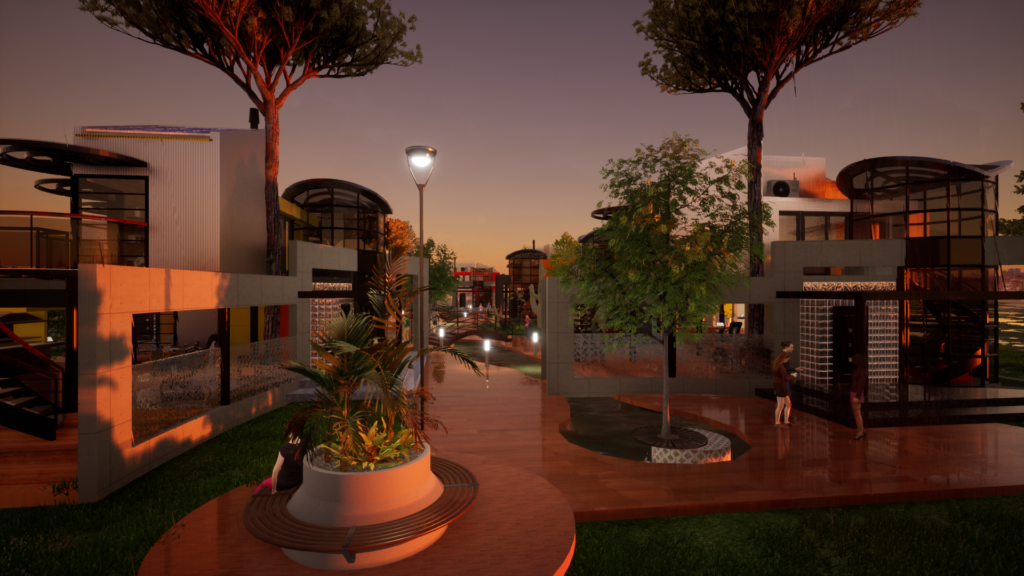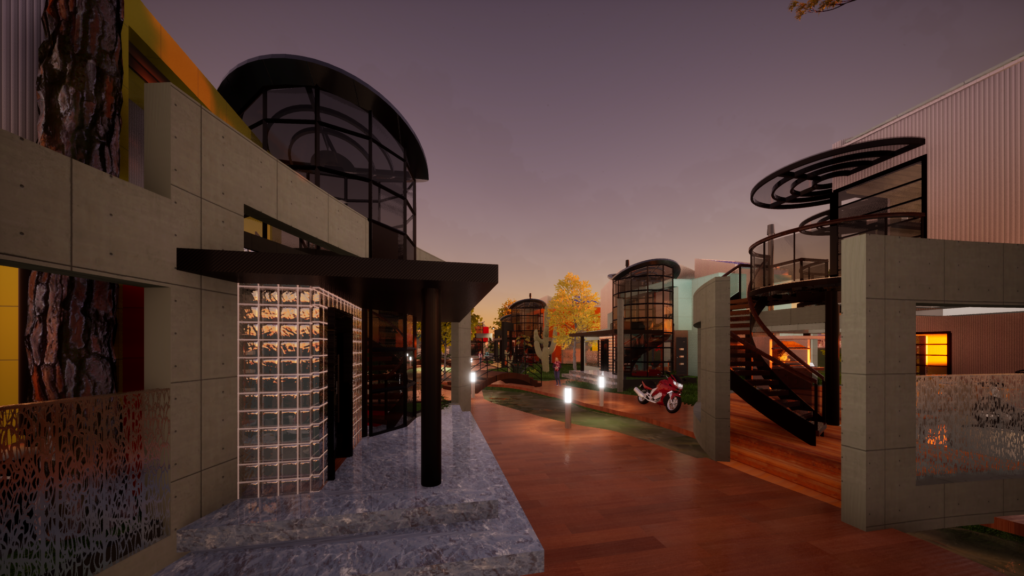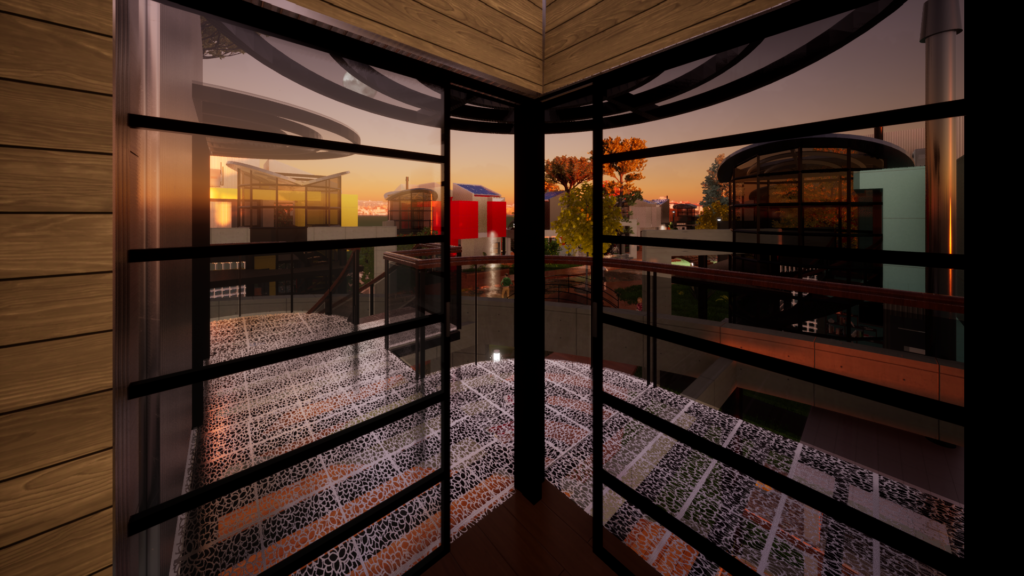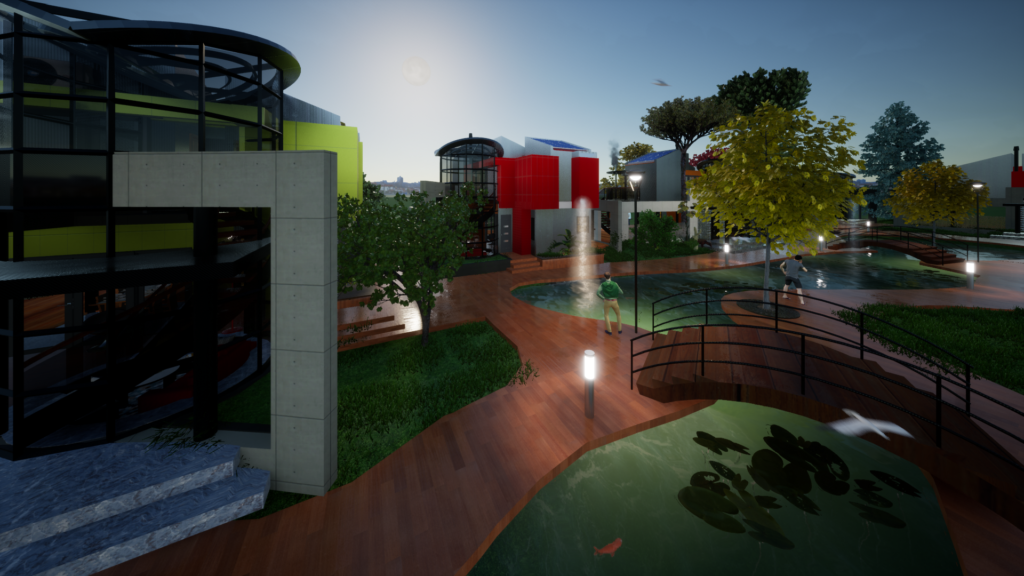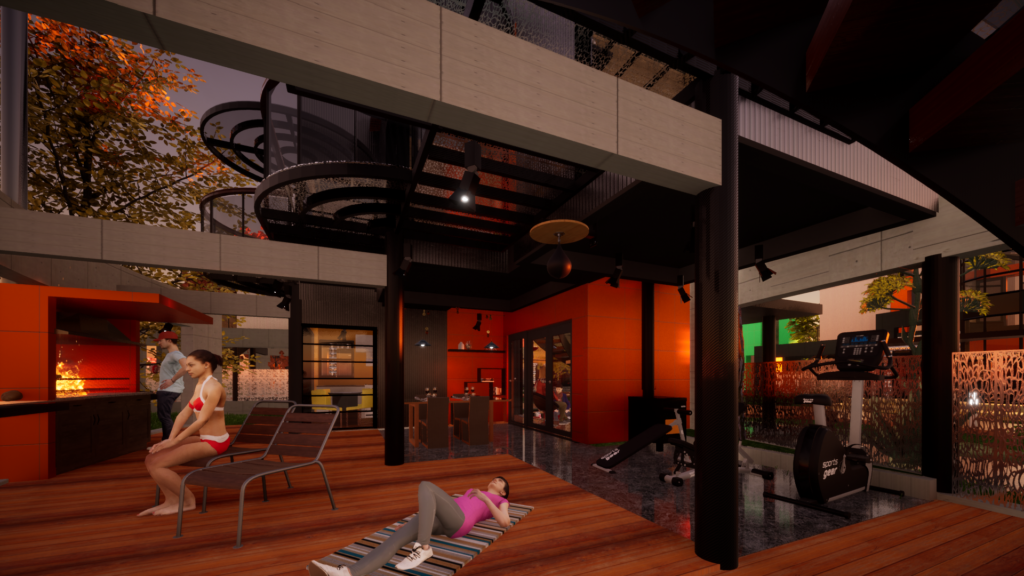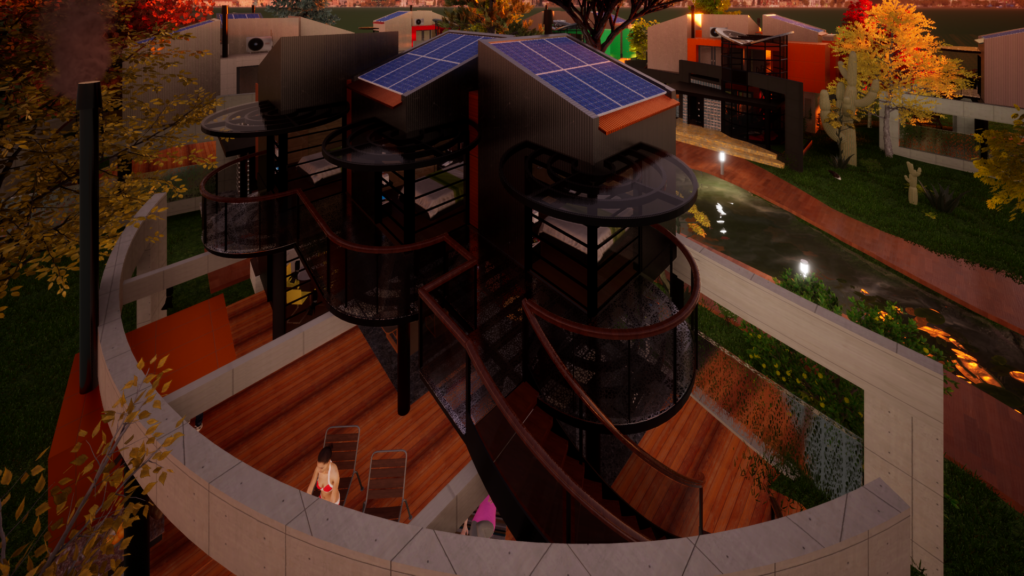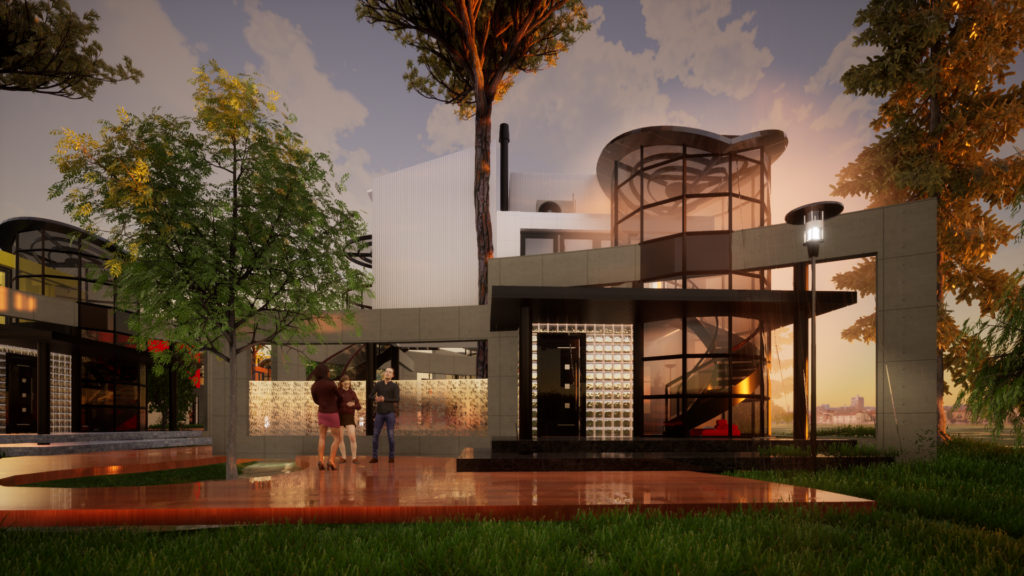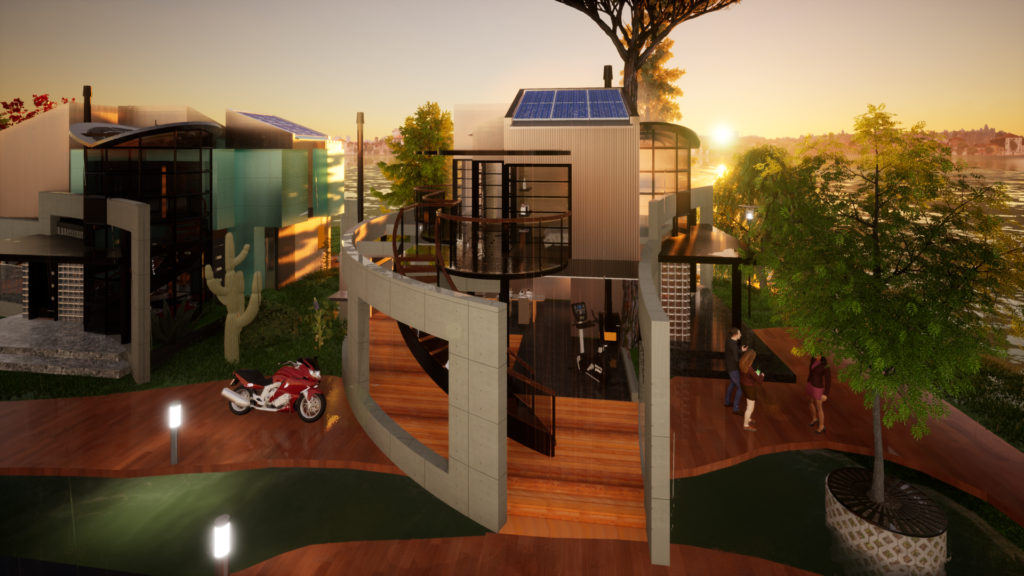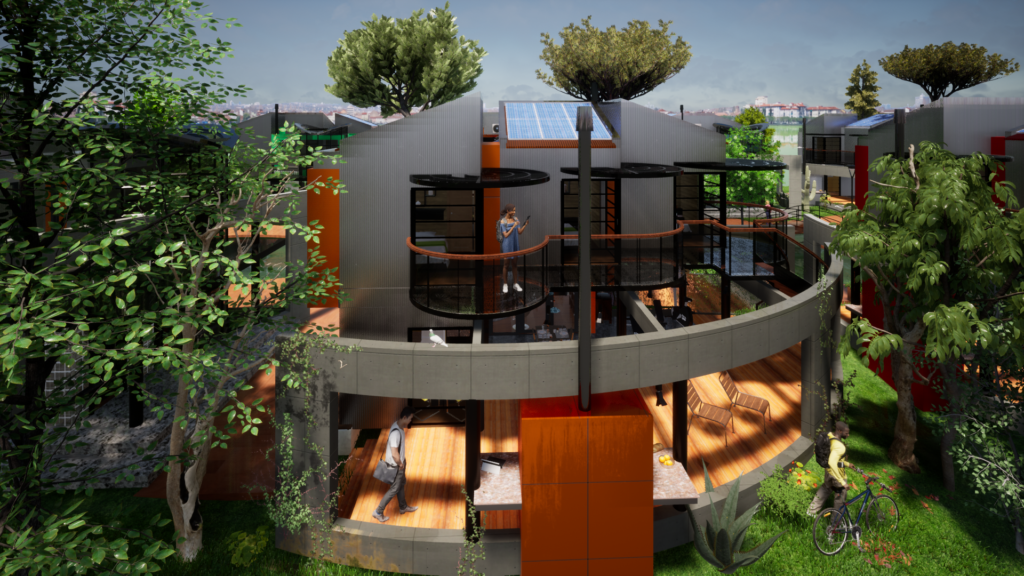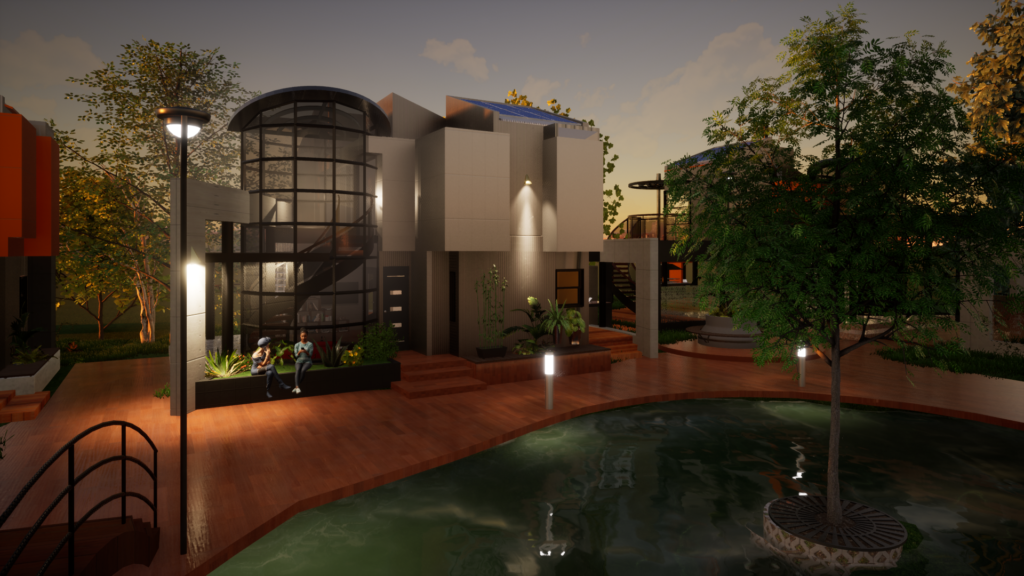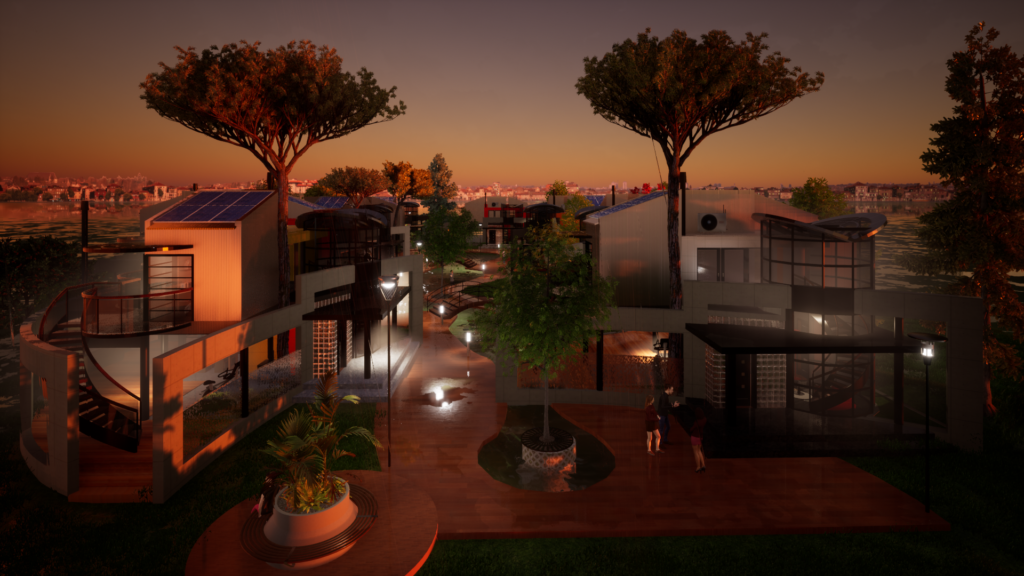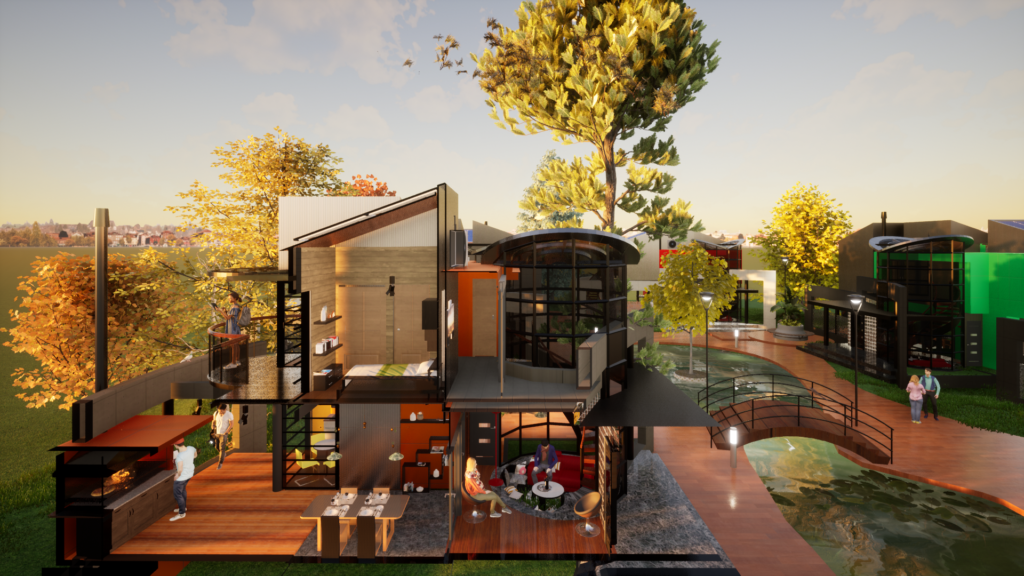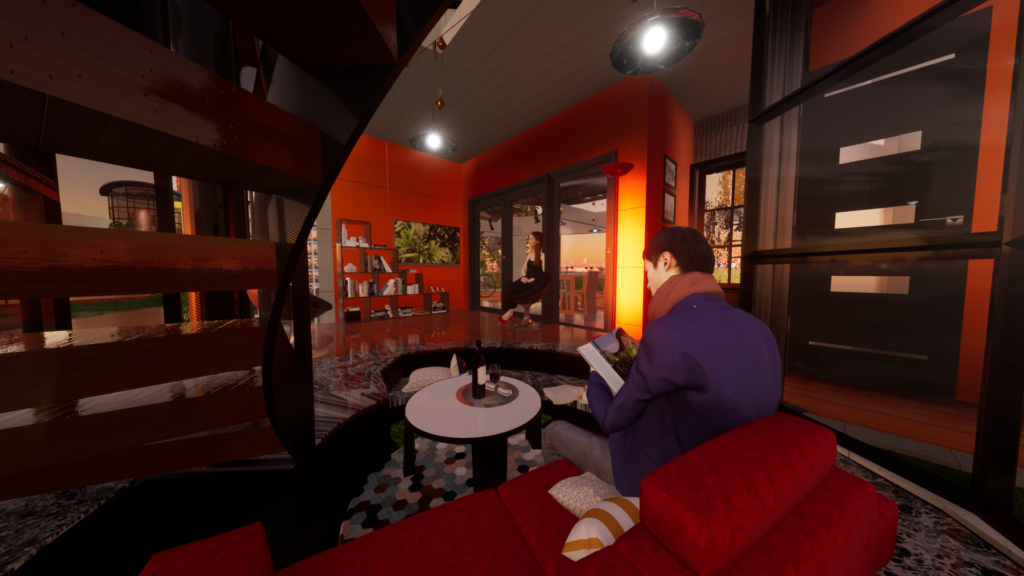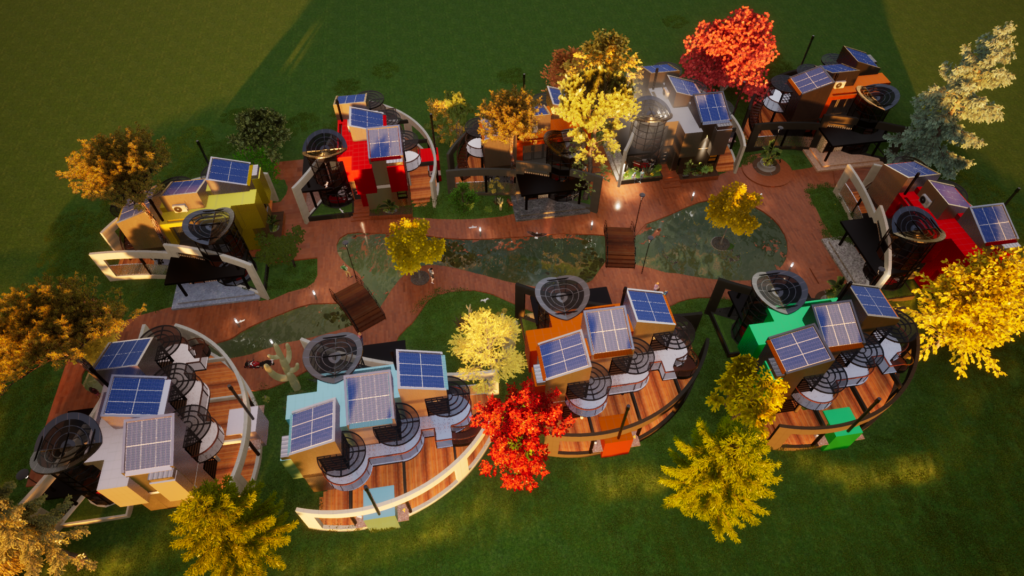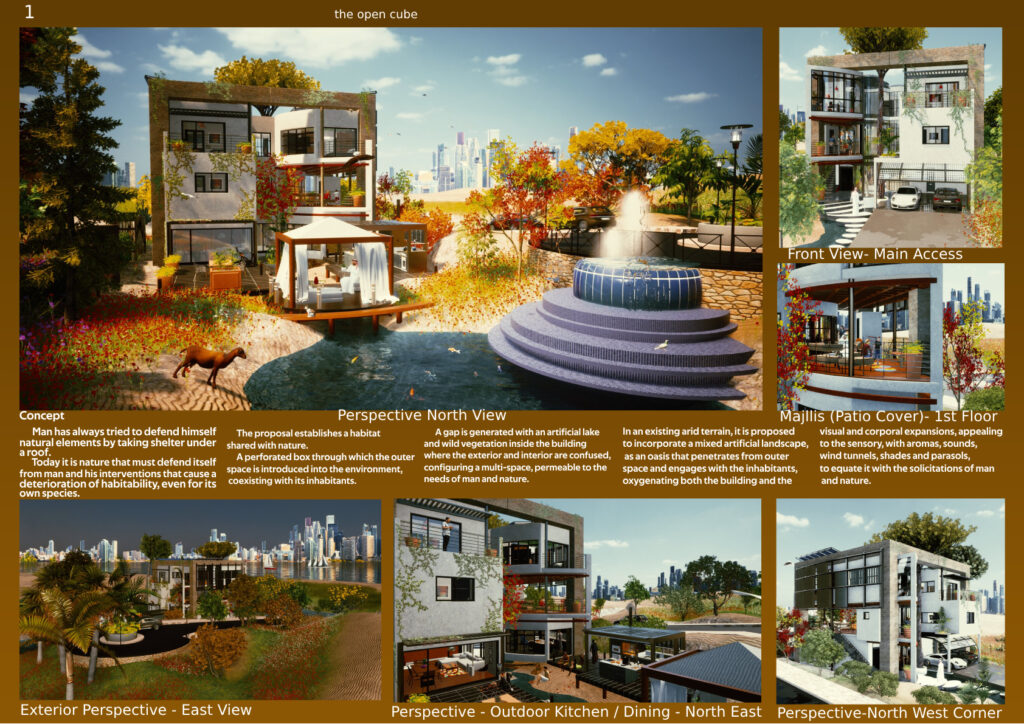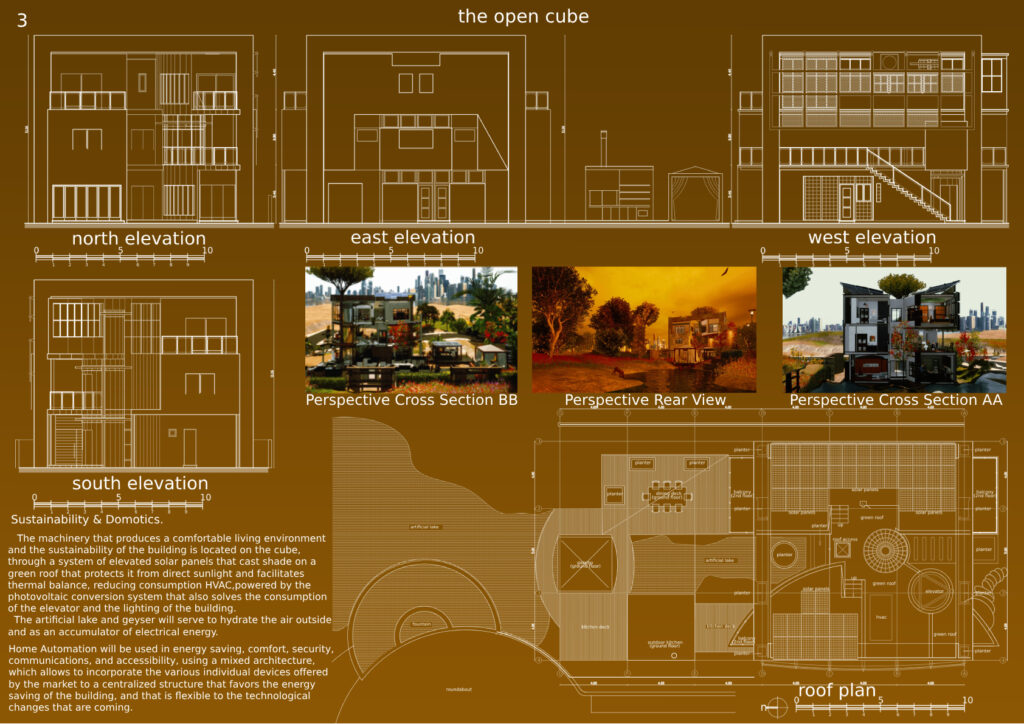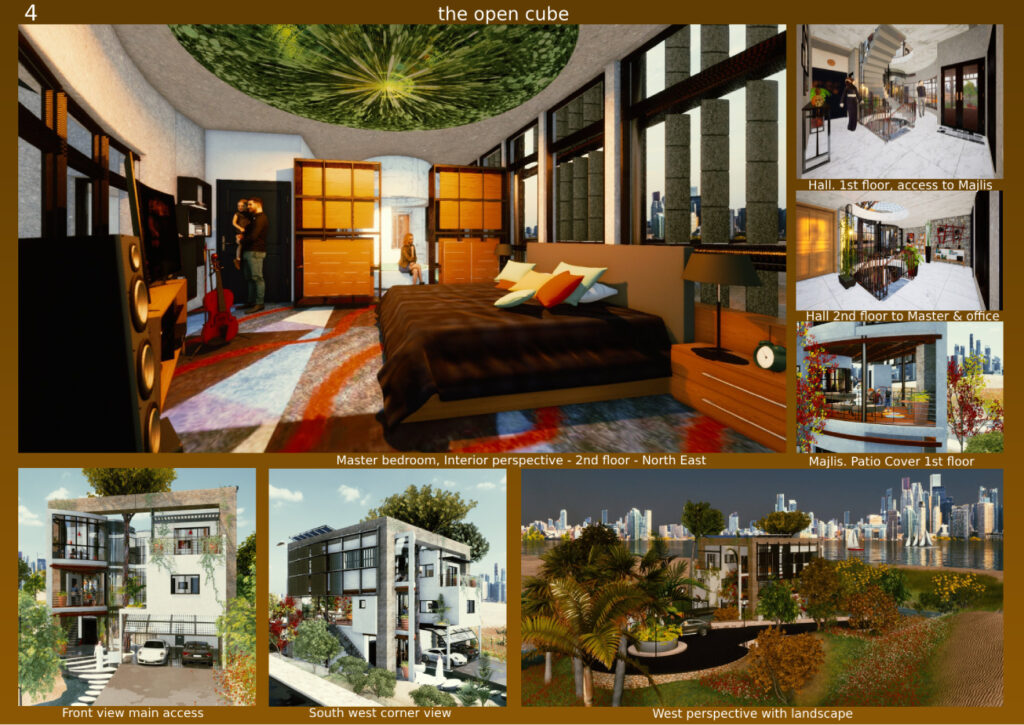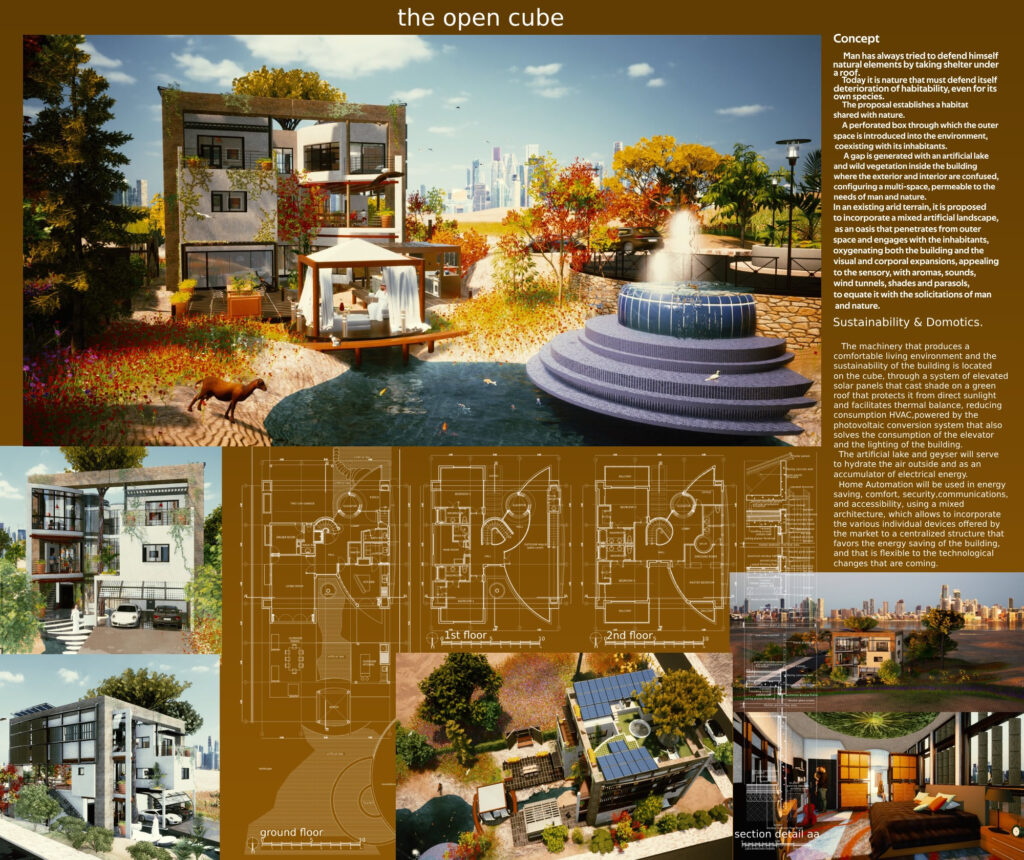Author: admin
Tiny House Lake Arrowhead in winter
Tiny House International Architecture Contest, 2020
This is a concept with 350 sf Livable area, plus terraces, decks and Pier. Kitchen with breakfast with Patio Cover with BBQ and dining area on first floor; on the second floor is the living room convertible in a Bedroom in double height, with a mezzanine where the small office with a library is located. on top of the building is located the main access and the bridge where the parking is, linked to the street. All the levels are connected by an elevator with its transparent steel and glass passageway that allows the inhabitants to view the terraces and the exterior landscape. Thus, the small house on 3 l3v3ls, allows double access by road on tof as well as by saling from the lake level.
Tiny House Architectural Contest
The new conditions of the third millennium have led us to rethink our way of life.
We have overwhelmed nature with overpopulation, which is causing positive reflection aimed at ending an era of destruction of our habitat, as we have known it.
We must think about reducing the space we have appropriated to minimize these effects by optimizing land use by alternating it over time.
Globalization and the different time zones of the planet could lead to a reorganization of working times around the world.
Working from home would eliminate the movement of large masses of vehicles at fixed times that cause large traffic jams during peak hours.
The areas that we must gradually modify are those in which we have abused the appropriation of natural soil, with constructions that have waterproofed the surface of the earth, such as roads, roofs, solar panels, etc. causing the modification of the natural water cycle, as well as air pollution.
To avoid this, the strategy must focus on the realization of new projects that minimize its total area and are surrounded by green spaces.
As for the single-family house, we have usually assigned a room for each use. Therefore, a bedroom is used a third of the day, (8 hours daily) Kitchen, one hour per meal (4 hours in 24) and so on with each of the uses.
In California, many young people share their housing needs by taking advantage of the fact that students and workers sleep at different times. This could well be optimized if a system of shared shifts, commonly called a “hot bed”, were planned. Similarly, it is not necessary for a house to have more than one bathroom that is used for no more than an hour a day.
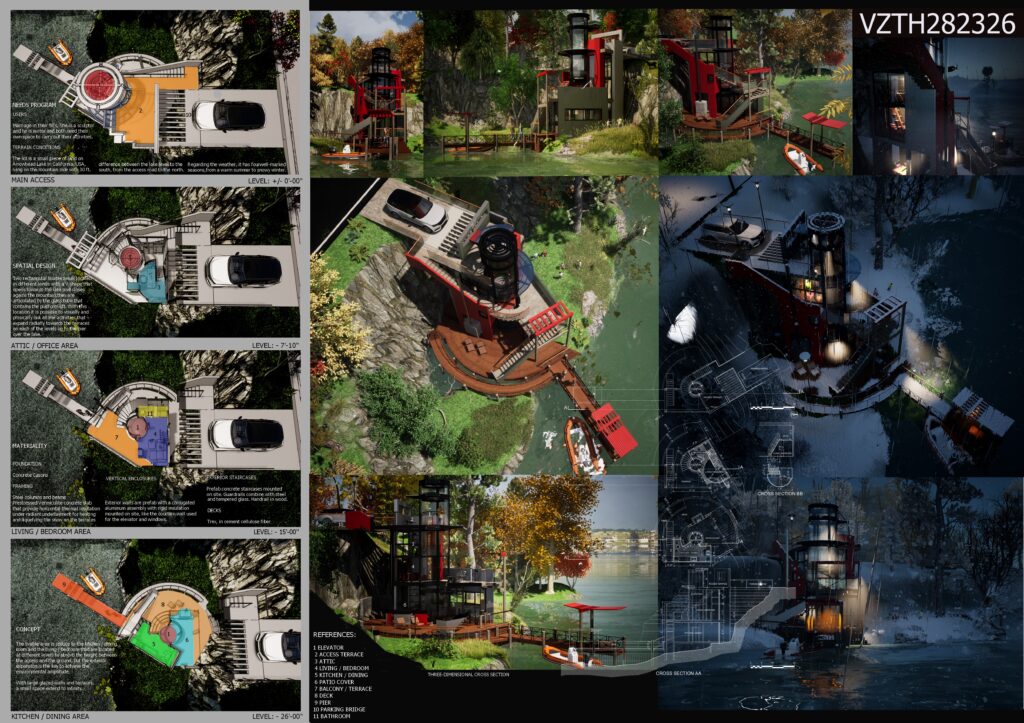
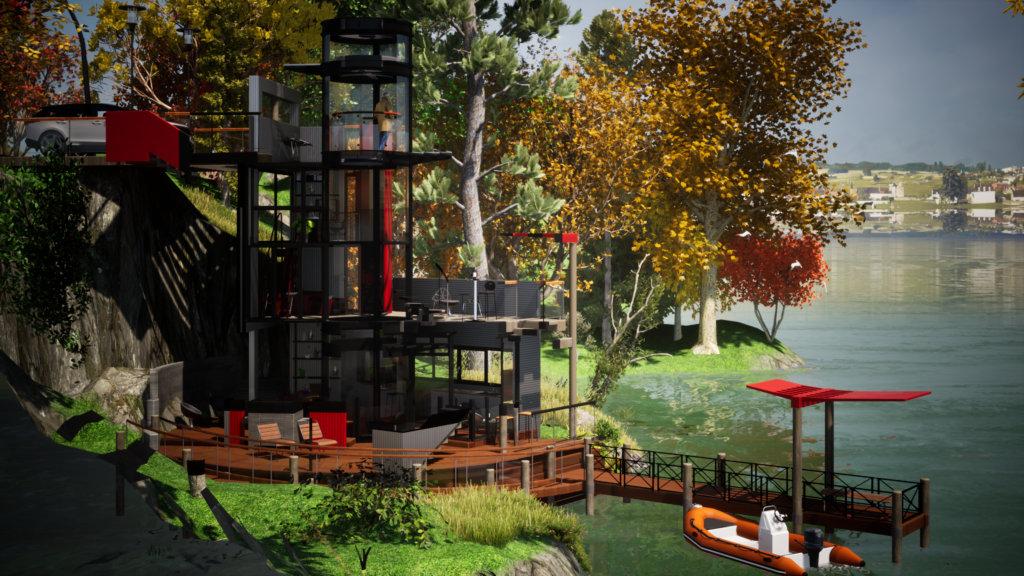
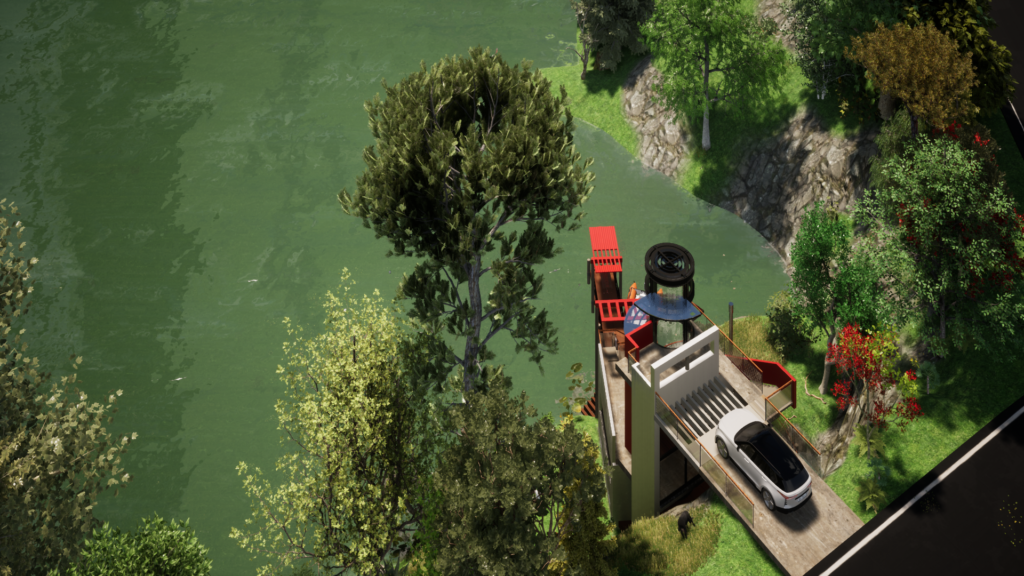
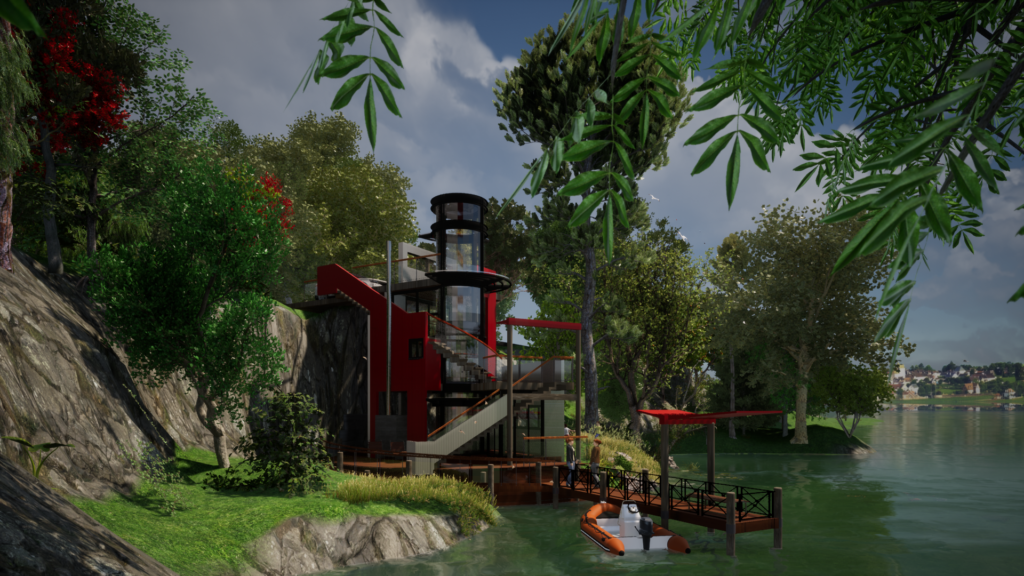
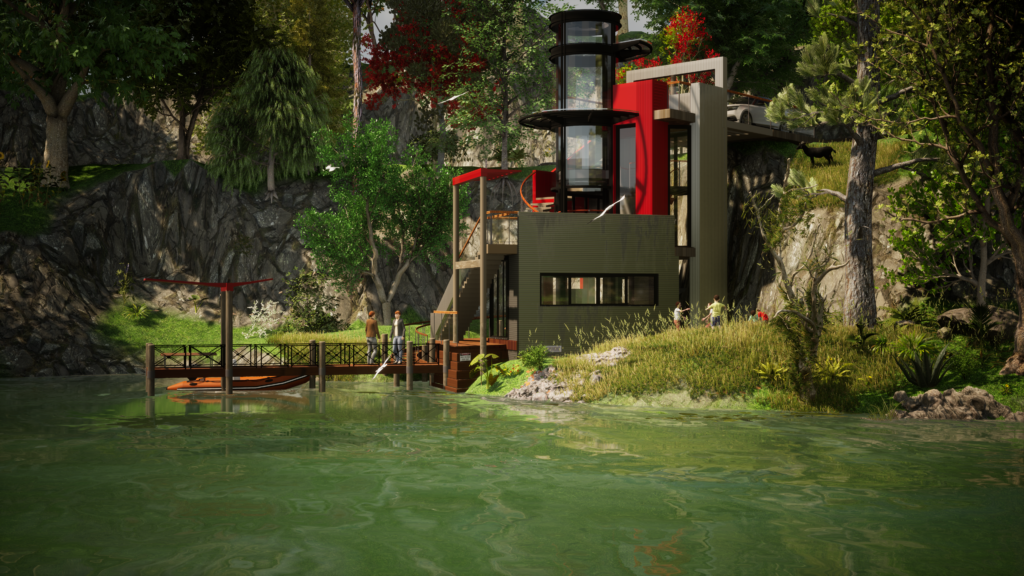
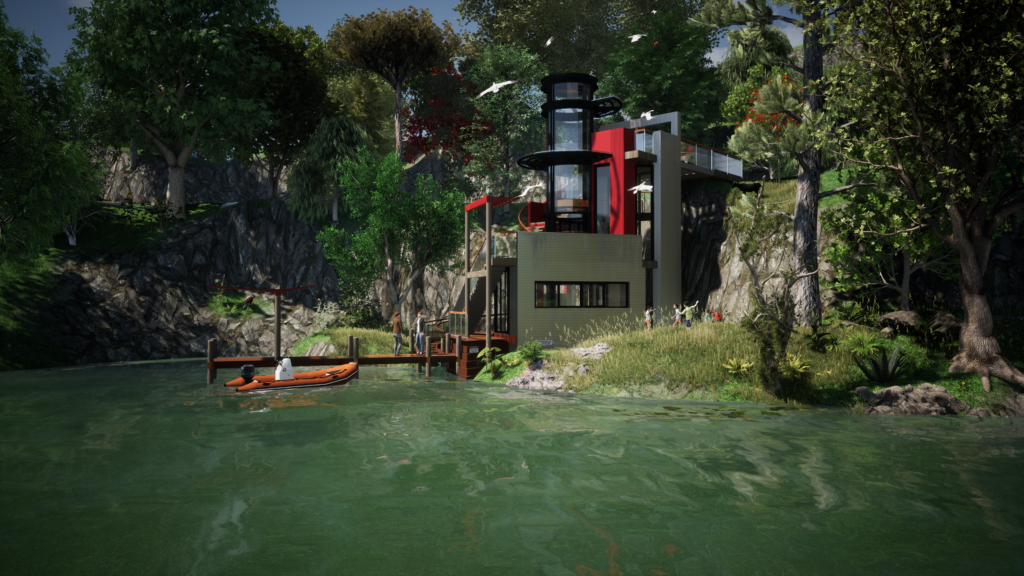
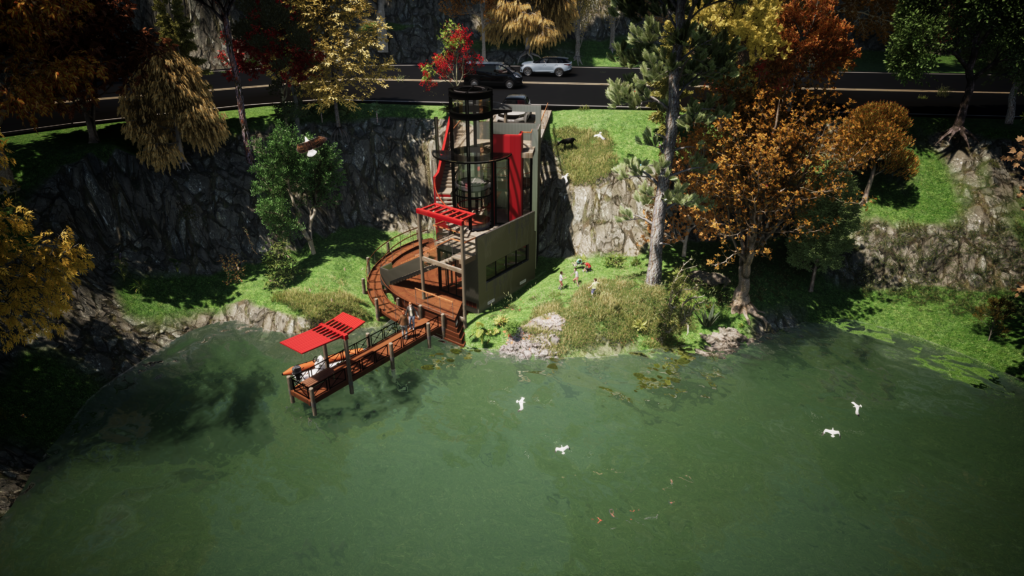
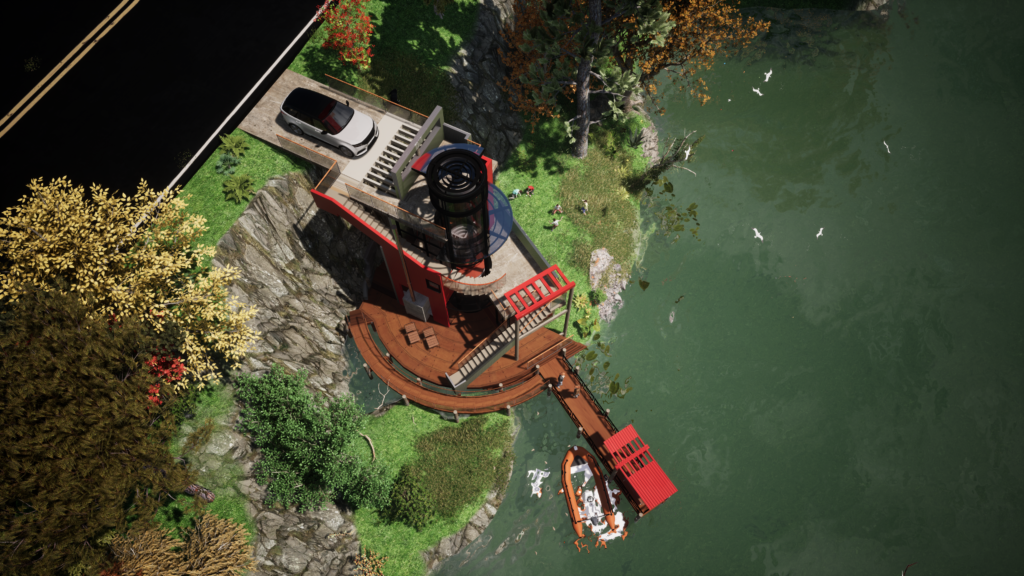
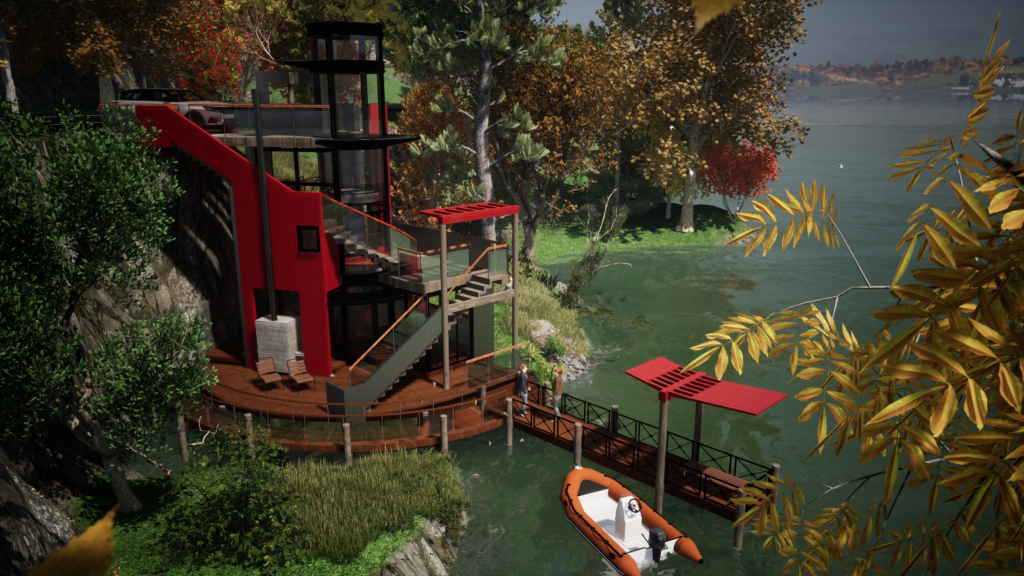
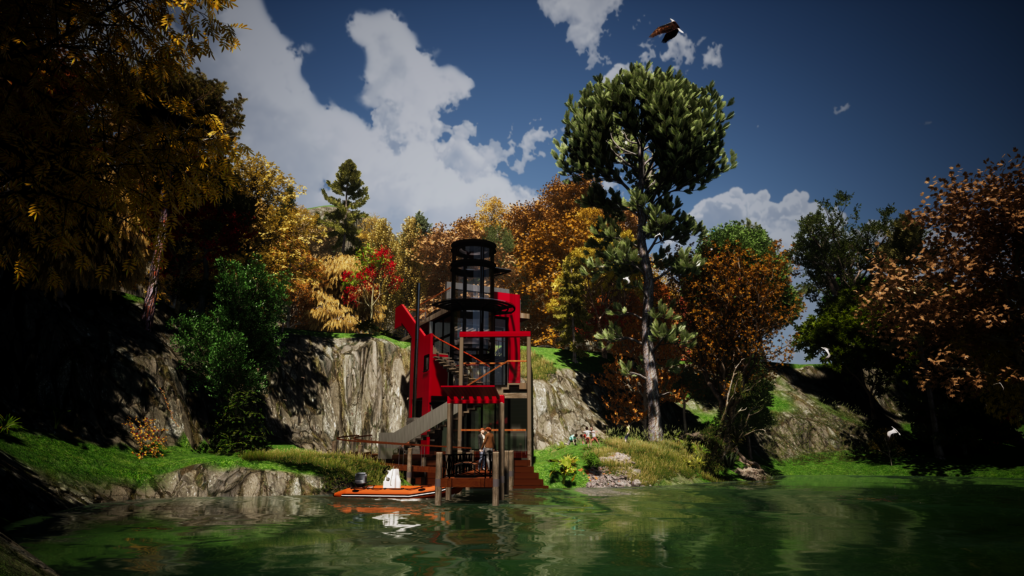
Aquatic Heliconia
Skycraper Architectural Contest 2011
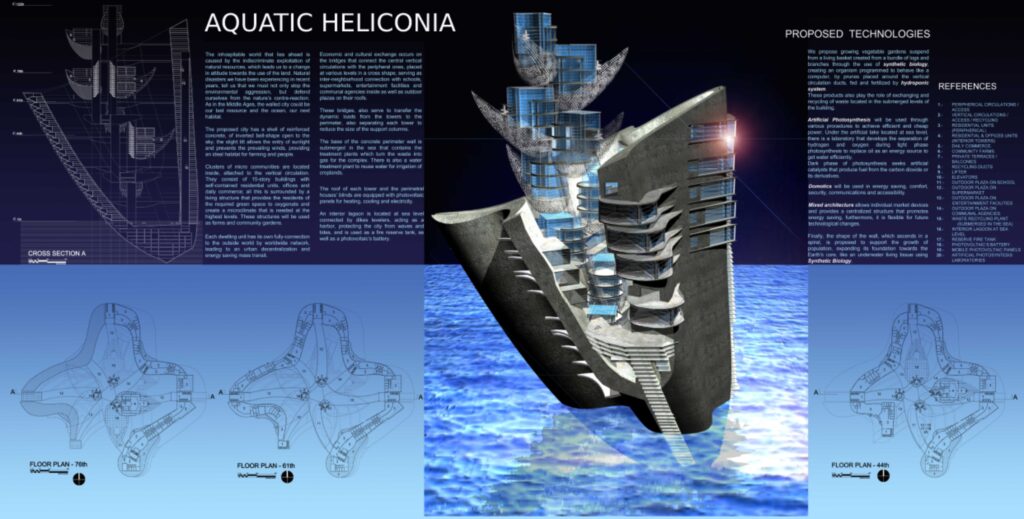
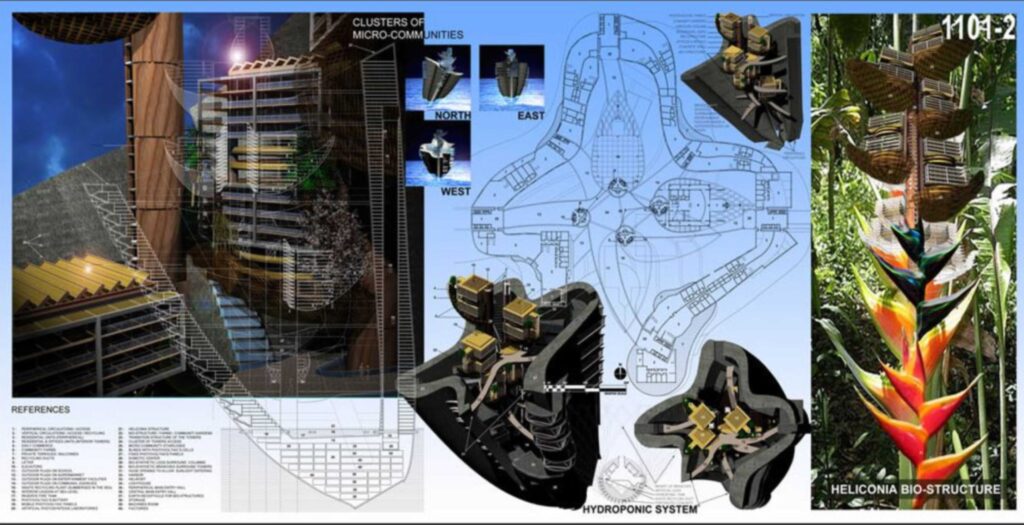

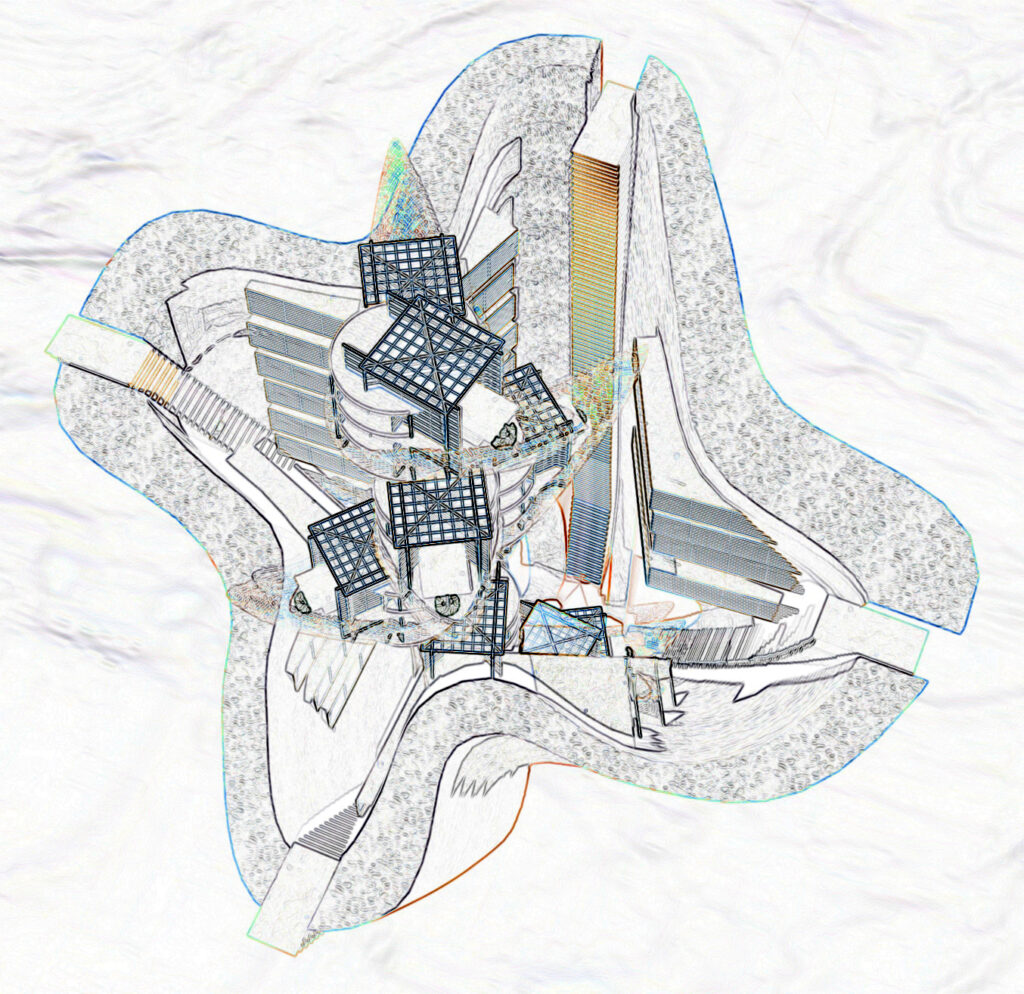
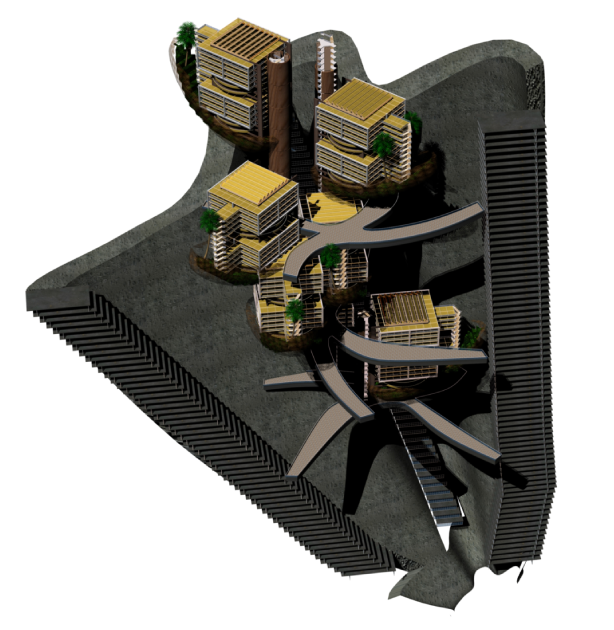
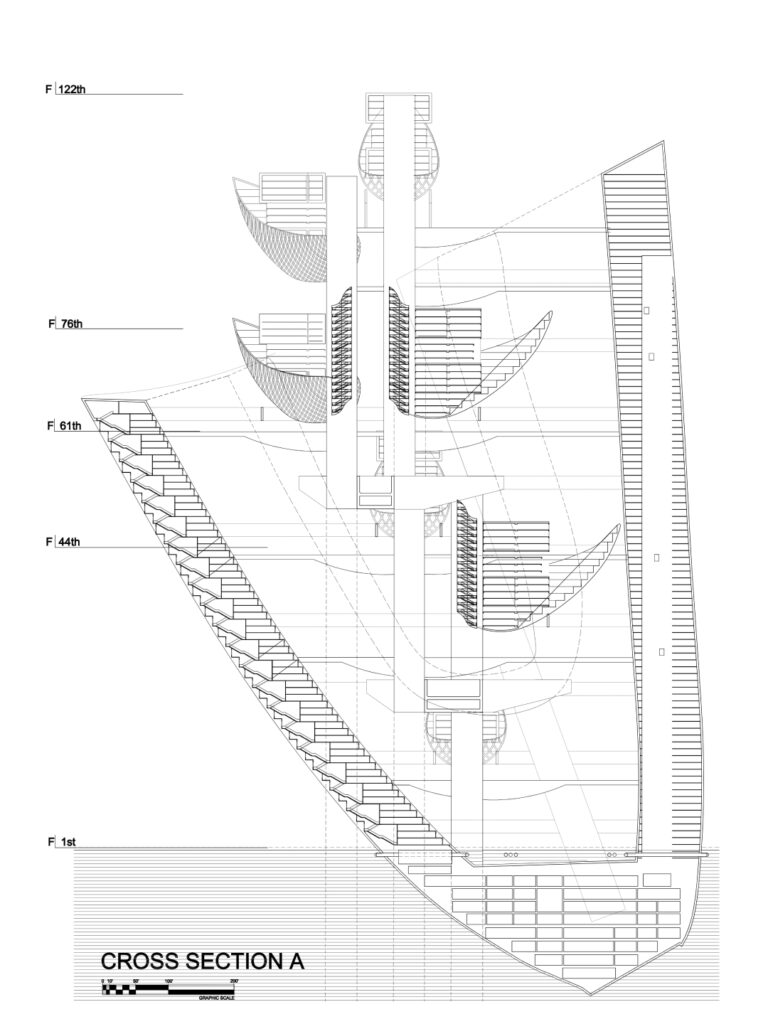
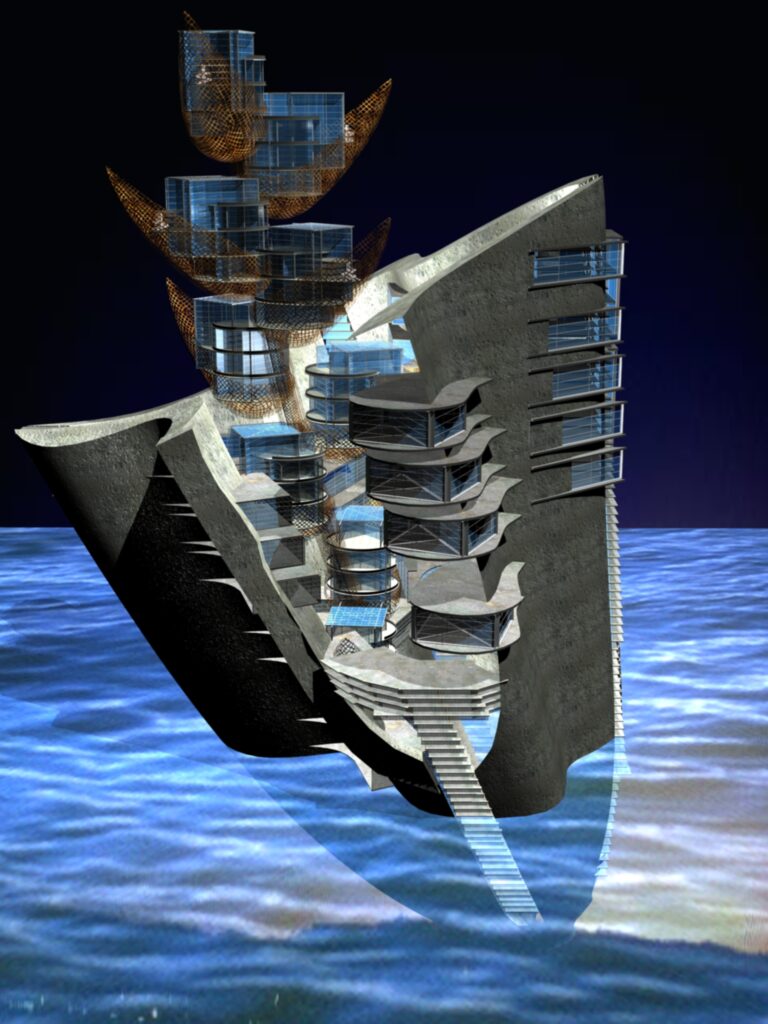
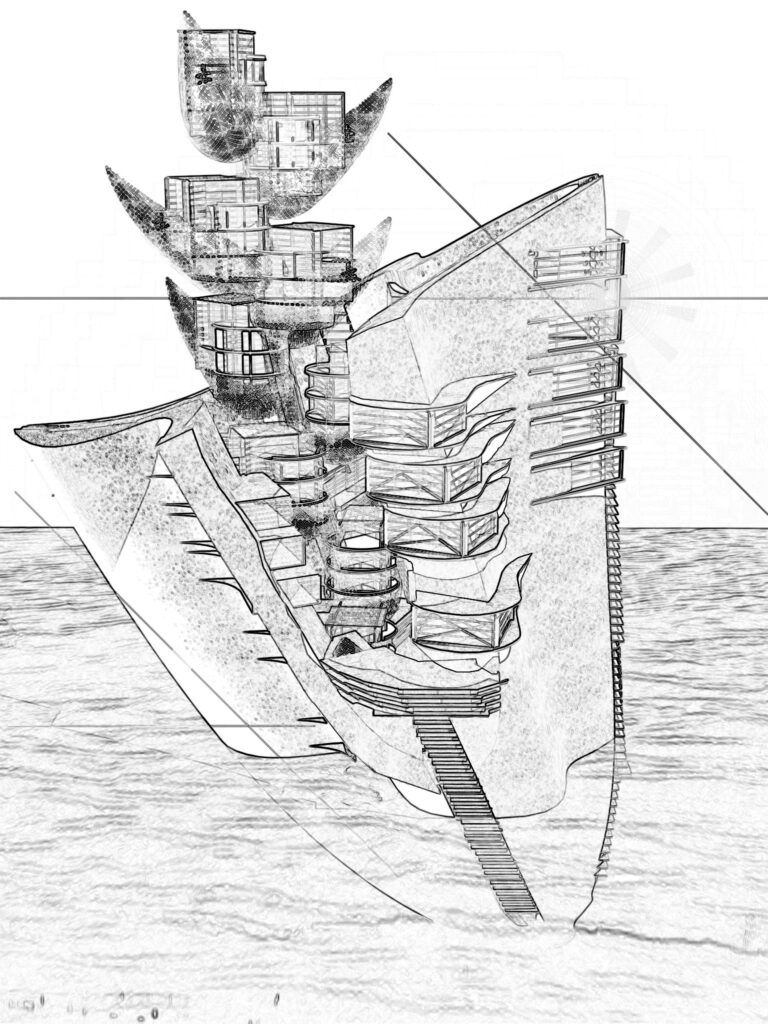
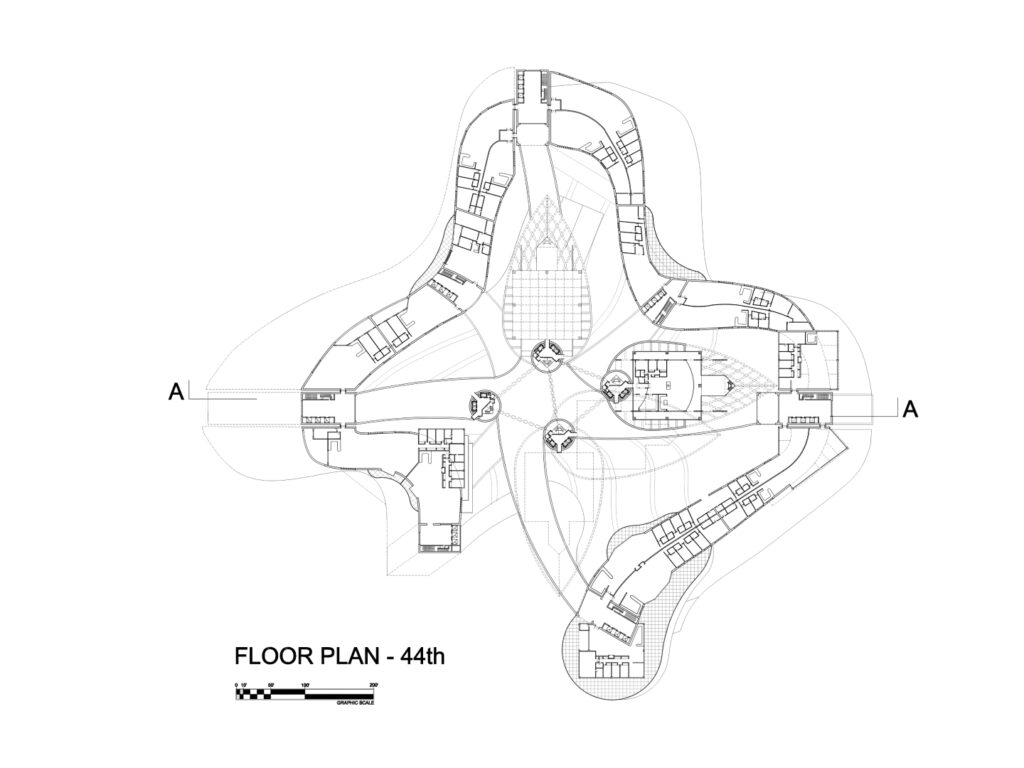
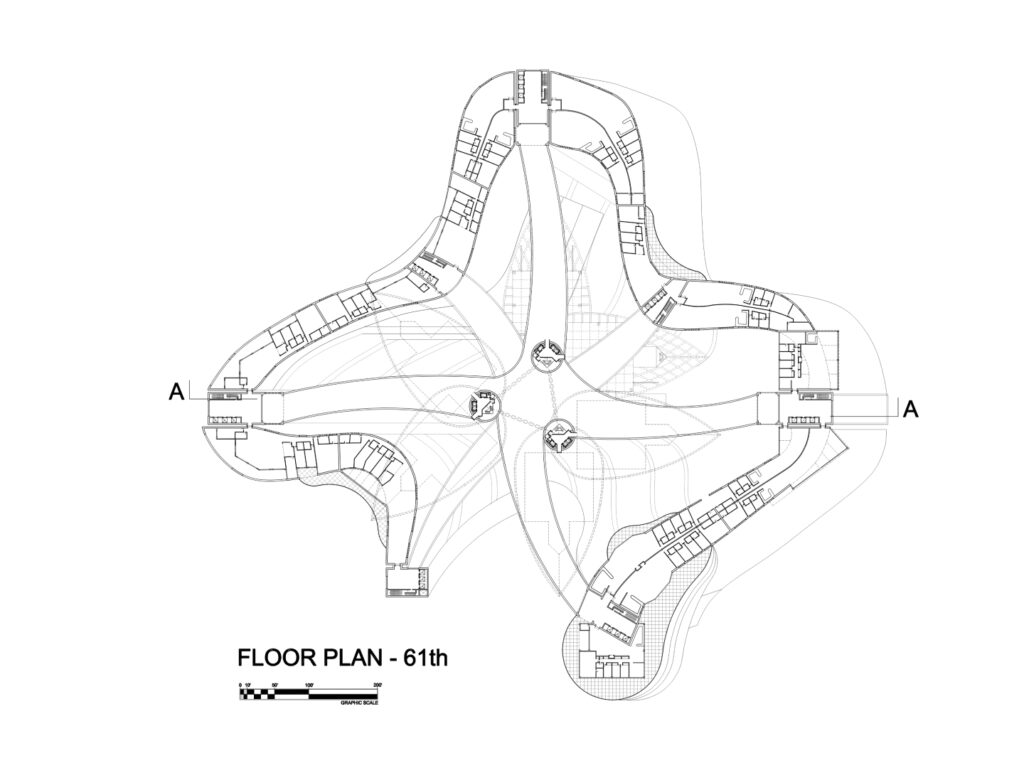

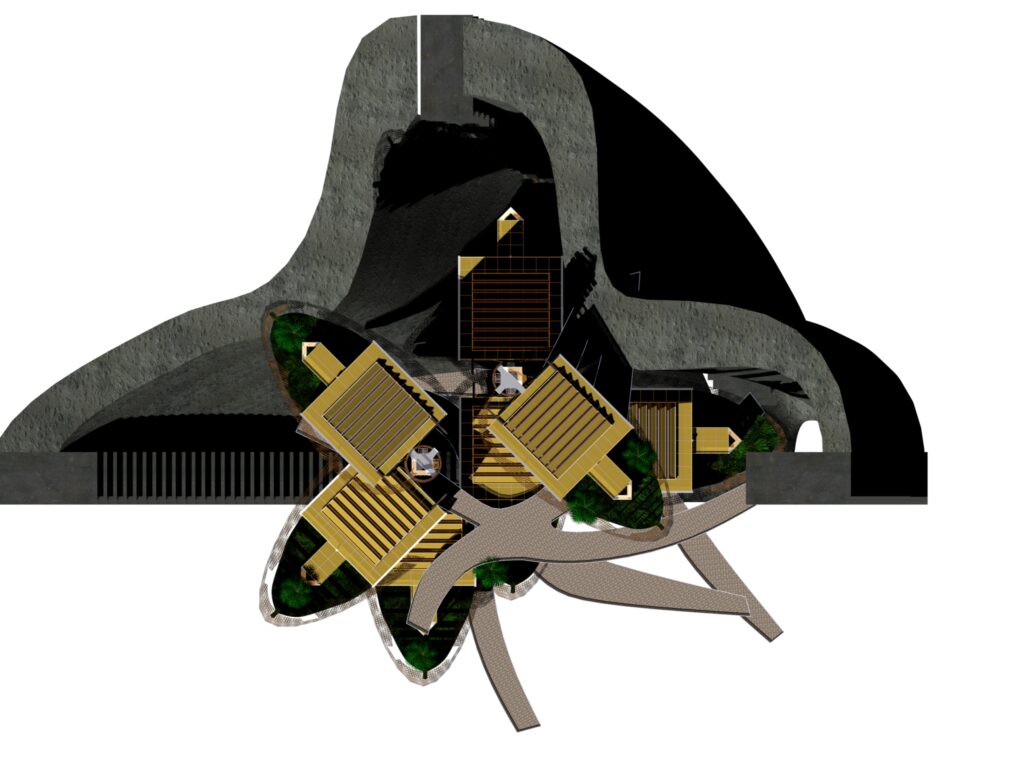
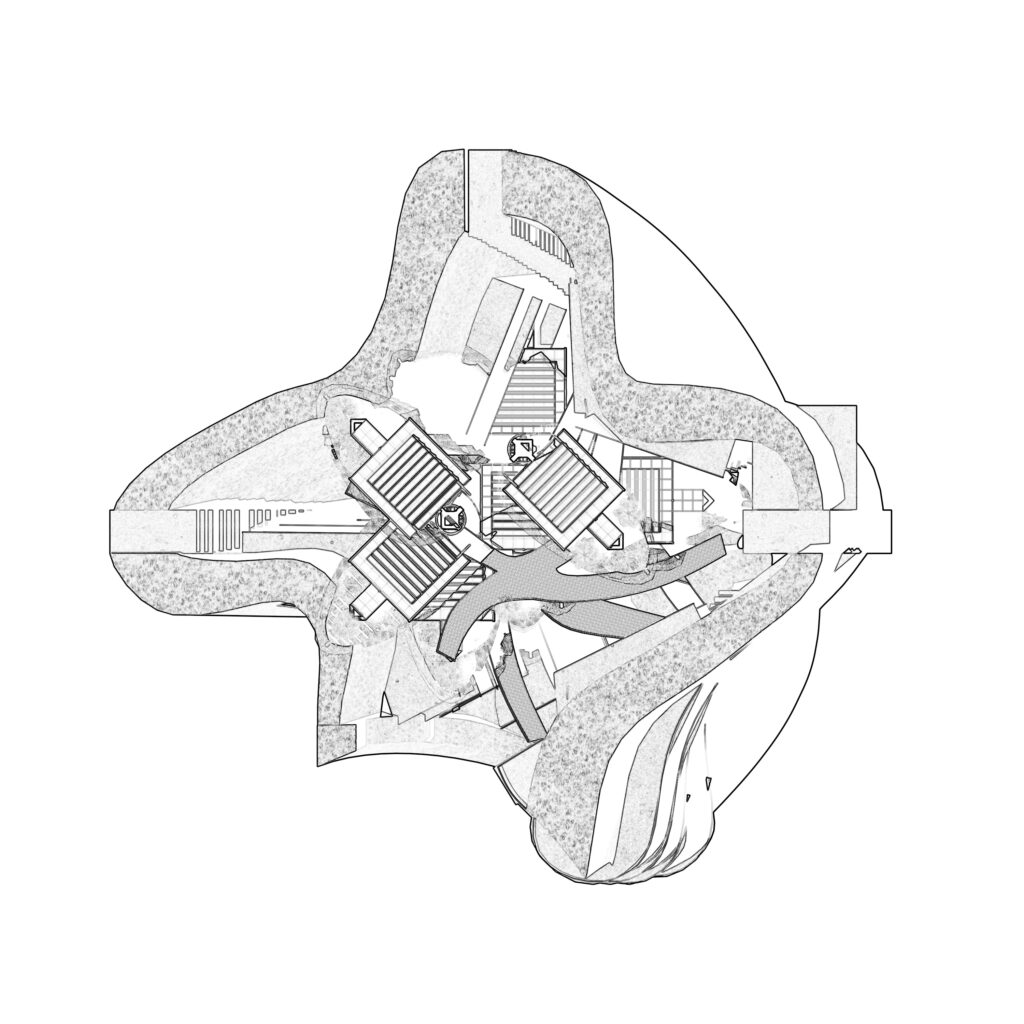

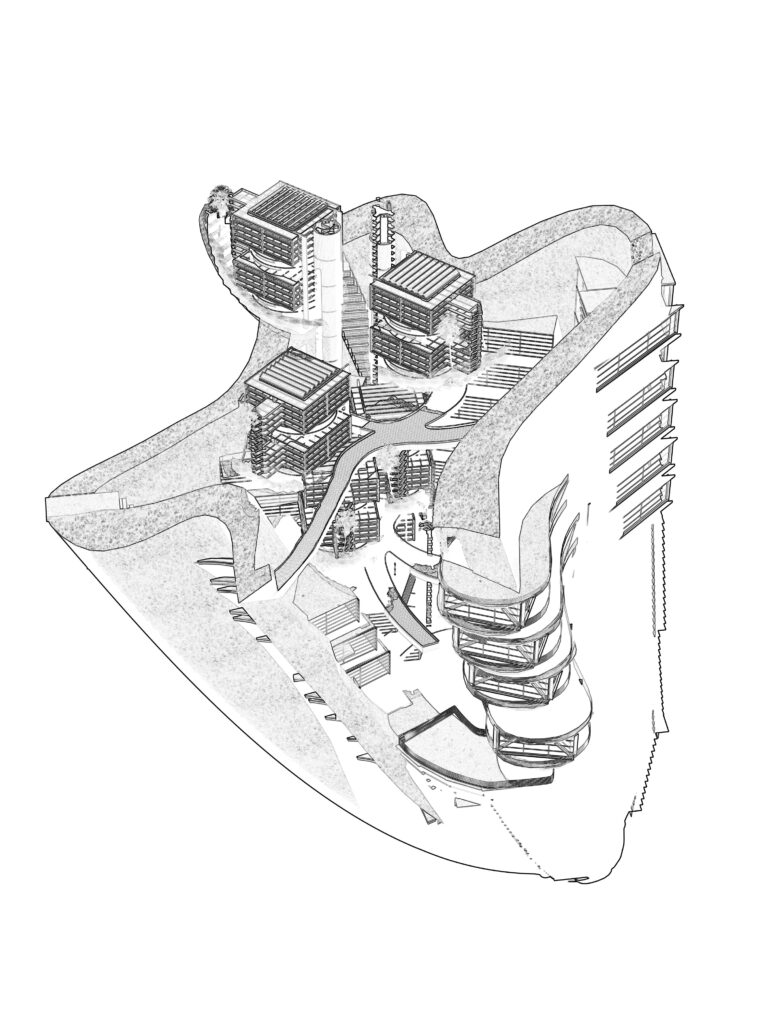
Aquatic Heliconia
The inhospitable world that lies ahead is caused by the indiscriminate exploitation of natural resources, which leads us to a change in attitude towards the use of the land. Natural disasters we have been experiencing in recent years, tell us that we must not only stop the environmental aggression, but defend ourselves from the nature’s contra-reaction. As in the Middle Ages, the walled city could be our last resource and the ocean, our next habitat.
The proposed city has a shell of reinforced concrete, of inverted bell-shape open to the sky; the slight tilt allows the entry of sunlight and prevents the prevailing winds, providing an ideal habitat for farming and people.
Clusters of micro communities are located inside, attached to the vertical circulation. They consist of 15-story buildings with self-contained residential units, offices and daily commerce; all this is surrounded by a living structure that provides the residents of the required green space to oxygenate and create a microclimate that is needed at the highest levels. These structures will be used as farms and community gardens.
Each dwelling unit has its own fully-connection to the outside world by worldwide network, leading to an urban decentralization and energy saving mass transit.
Economic and cultural exchange occurs on the bridges that connect the central vertical circulations with the peripheral ones, placed at various levels in a cross shape, serving as inter-neighborhood connection with schools, supermarkets, entertainment facilities and communal agencies inside as well as outdoor plazas on their roofs.
These bridges, also serve to transfer the dynamic loads from the towers to the perimeter, also separating each tower to reduce the size of the support columns.
The base of the concrete perimeter wall is submerged in the sea that contains the treatment plants which turn the waste into gas for the complex. There is also a water treatment plant to reuse water for irrigation of croplands.
The roof of each tower and the perimetral houses’ blinds are equipped with photovoltaic panels for heating, cooling and electricity.
An interior lagoon is located at sea level connected by dikes levelers, acting as a harbor, protecting the city from waves and tides, and is used as a fire reserve tank, as well as a photovoltaic’s battery.
PROPOSED technologies:
We propose growing vegetable gardens suspend from a living basket created from a bundle of logs and branches through the use of synthetic biology, creating an organism programmed to behave like a computer, by prunes placed around the vertical circulation ducts, fed and fertilized by hydroponic system.
These products also play the role of exchanging and recycling of waste located in the submerged levels of the building.
Artificial photosynthesis will be used through various procedures to achieve efficient and cheap power. Under the artificial lake located at sea level, there is a laboratory that develops the separation of hydrogen and oxygen during light phase photosynthesis to replace oil as an energy source to get water efficiently.
Dark phase of photosynthesis seeks artificial catalysts that produce fuel from the carbon dioxide or its derivatives.
Domotics will be used in energy saving, comfort, security, communications and accessibility.
Mixed architecture allows individual market devices and provides a centralized structure that promotes energy saving, furthermore, it is flexible for future technological changes.
Finally, the shape of the wall, which ascends in a spiral, is proposed to support the growth of population, expanding its foundation towards the Earth’s core, like an underwater living tissue using synthetic biology.
Tiny Library Concept
LIBRARIES, AS WE KNOW THEM, ARE DESTINED TO DISAPPEAR.
JUST AS MUSEUMS WERE DESIGNED AS CLOSED BOXES, WHERE WORKS OF ART AND ELEMENTS THAT SHOW THE HISTORY OF HUMANITY WERE EXPOSED, TODAY THEY HAVE BEEN TRANSFORMED INTO AN OPEN SYSTEM THAT MAN HAS CONCEIVED AS HIS OWN DAILY LIFE.
IN THE SAME WAY, THE BOOKS HAVE BEEN LIMITED TO THE USE OF PAPER TO FIGHT CLIMATE CHANGE AND THE NEW DIGITAL WORLD ENDED MARKING THE END OF THE LAST LIBRARY.
THE “DEAD BOX” ENDS UP BREAKING AS A TEMPLE OF SCIENCES AND ARTS AND BECOMING A FIELD OF EXCHANGE FOR THE DEVELOPMENT OF OUR CULTURE.
THE CONCEPT
OUR TINY LIBRARY WILL BE LOCATED IN BLUFF PARK, LONG BEACH, CALIFORNIA, AND WILL HAVE THE CHARACTERISTICS OF A SINGLE SPACE OF MULTIPLE LEVELS WHERE THE DIFFERENT, INDIVIDUAL AND COLLECTIVE WORK AREAS COMBINE.
THE BUILDING WILL BE LOCATED IN A STAGED FORM AND THE RESULTING TERRACES WILL BE USED AS OUTDOOR READING SPACES TO SUGGEST THE PERMEABILITY OF THE PUBLIC SPACE.
THE INCUNABLE BOOKS WILL BE THE ONLY ENABLED TO READ IN THE ROOMS AND WILL BE LOCATED IN SMALL DEPOSITS THAT WILL HAVE SLIDING BOOKSHELVES THAT WILL ALLOW WAREHOUSES UP TO 10,000 VOLUMES
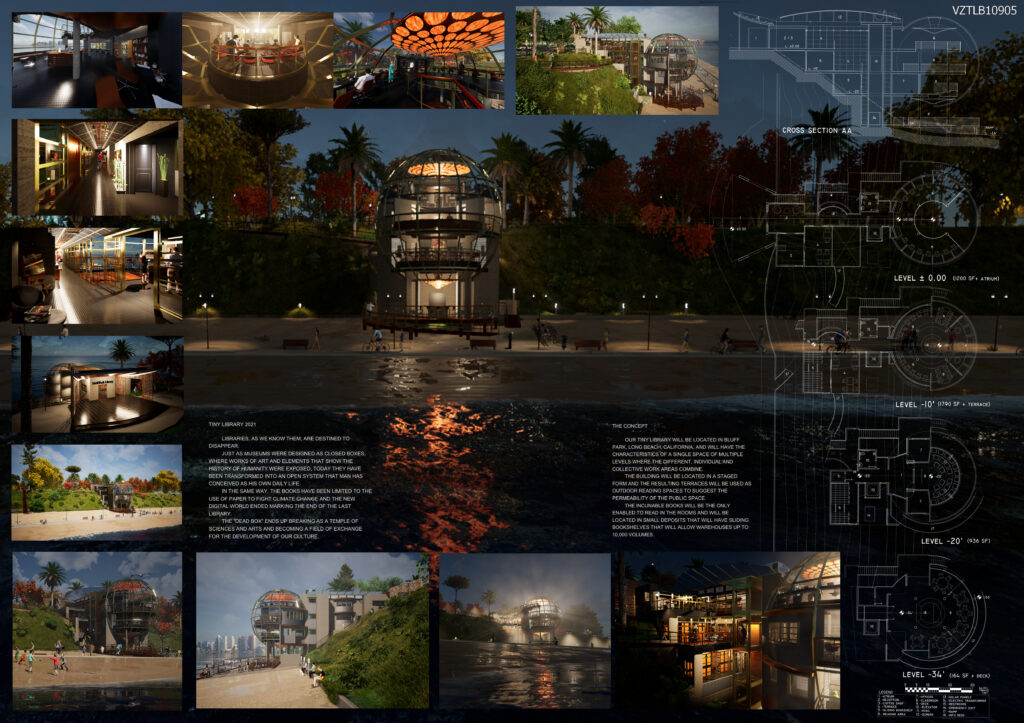


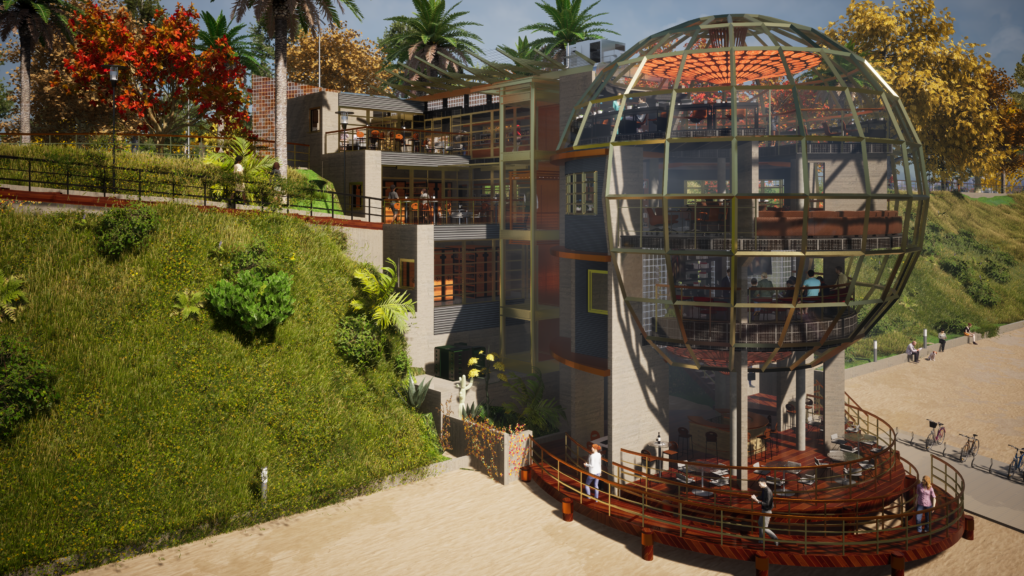
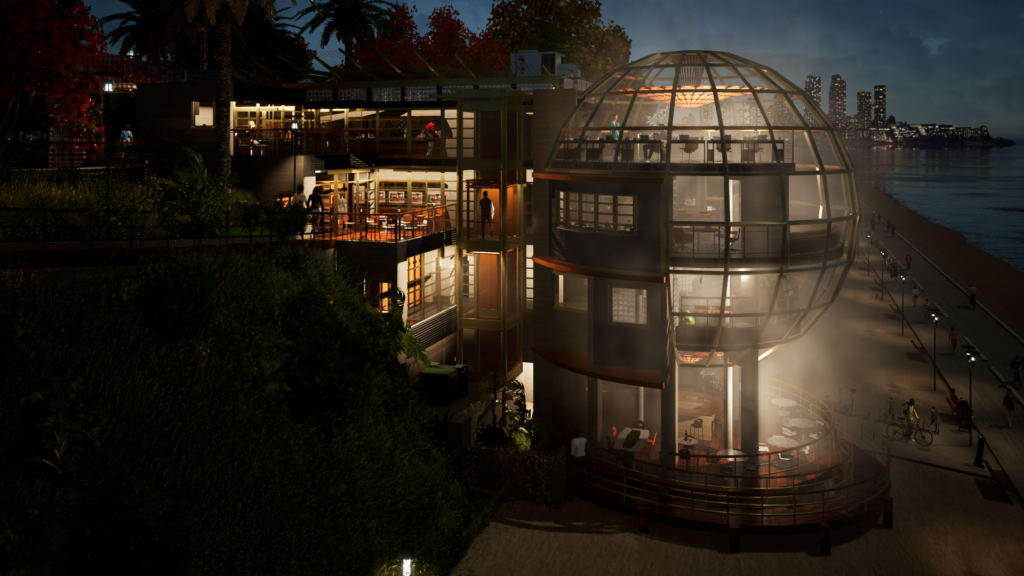

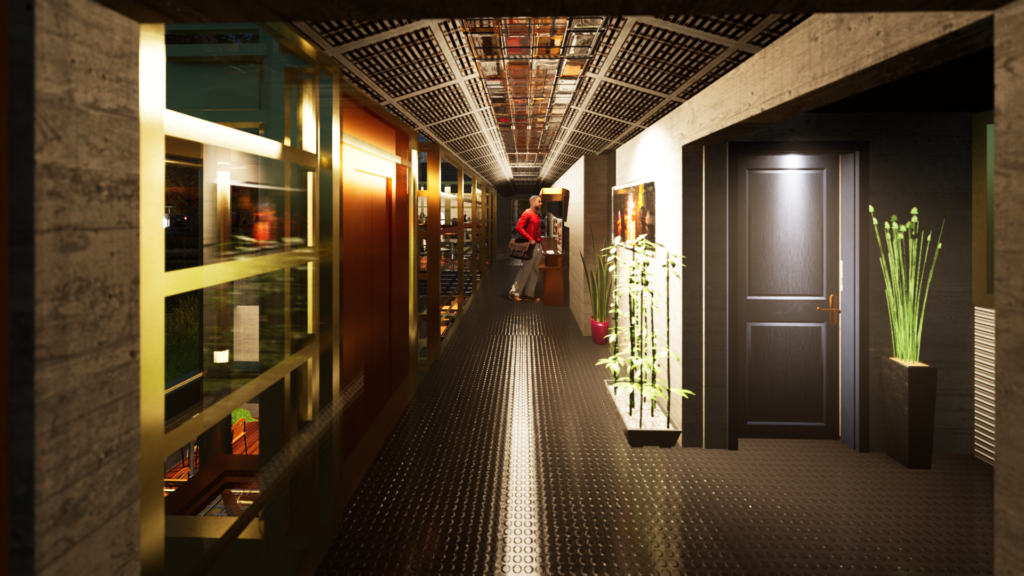
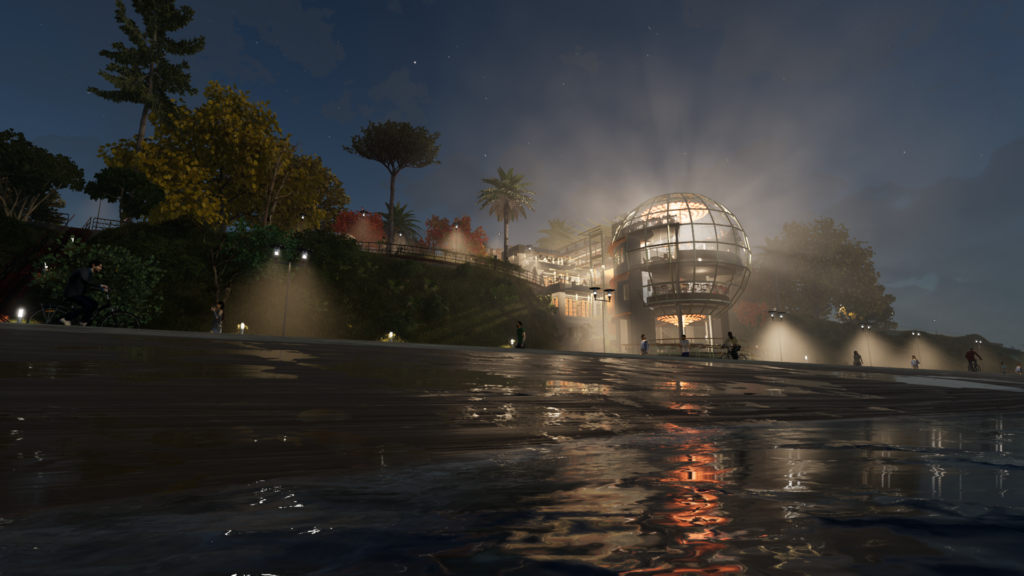
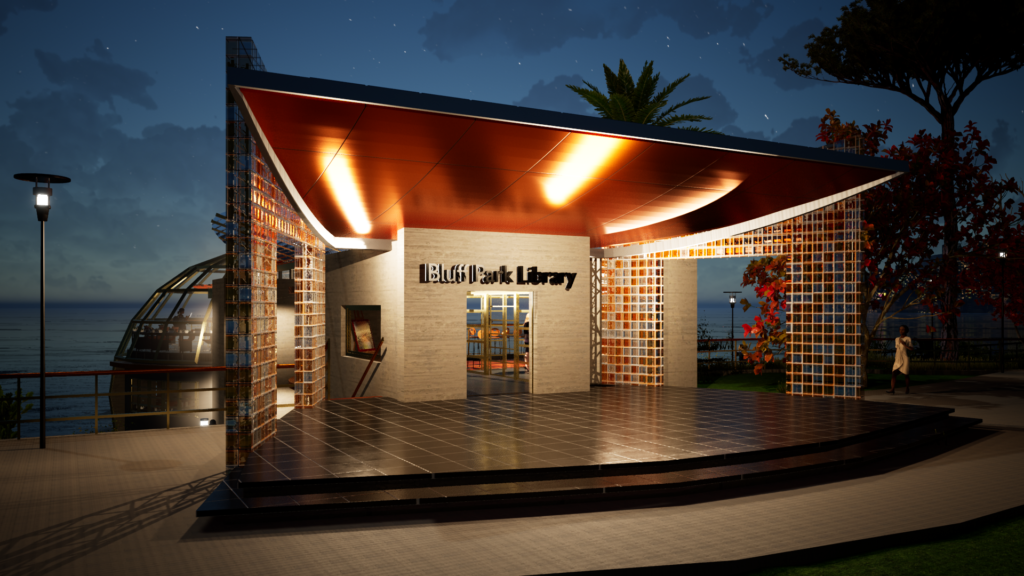
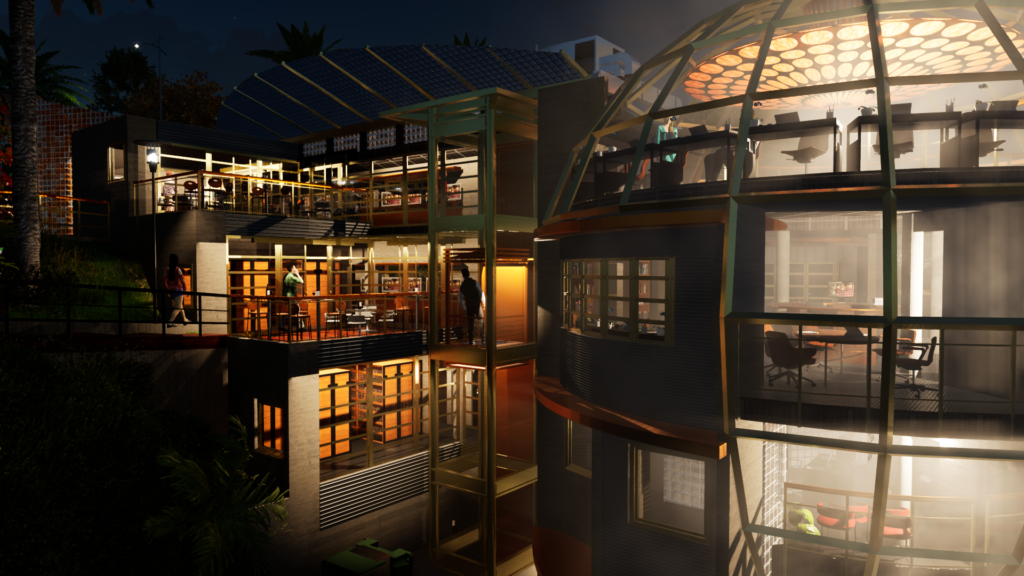
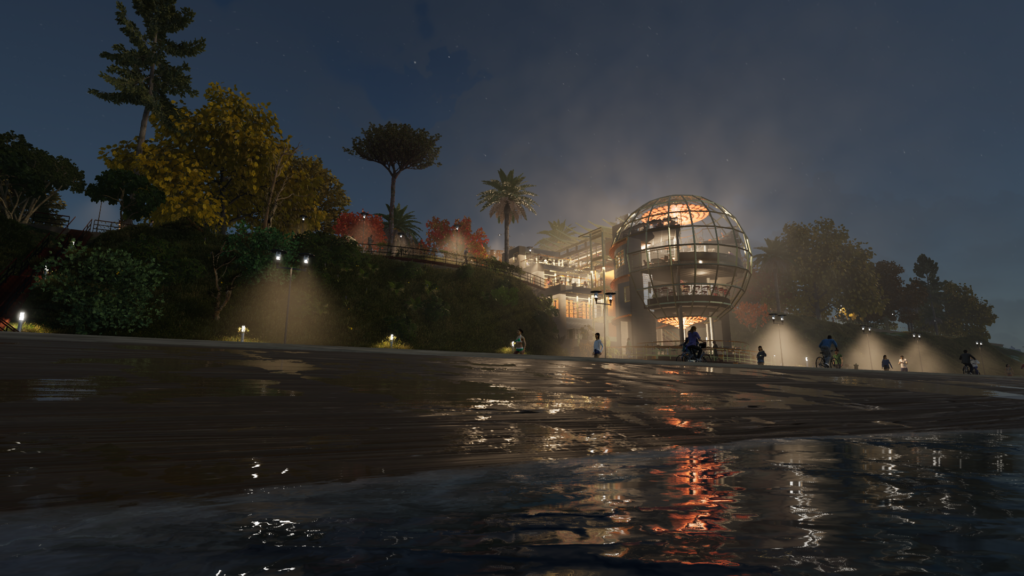
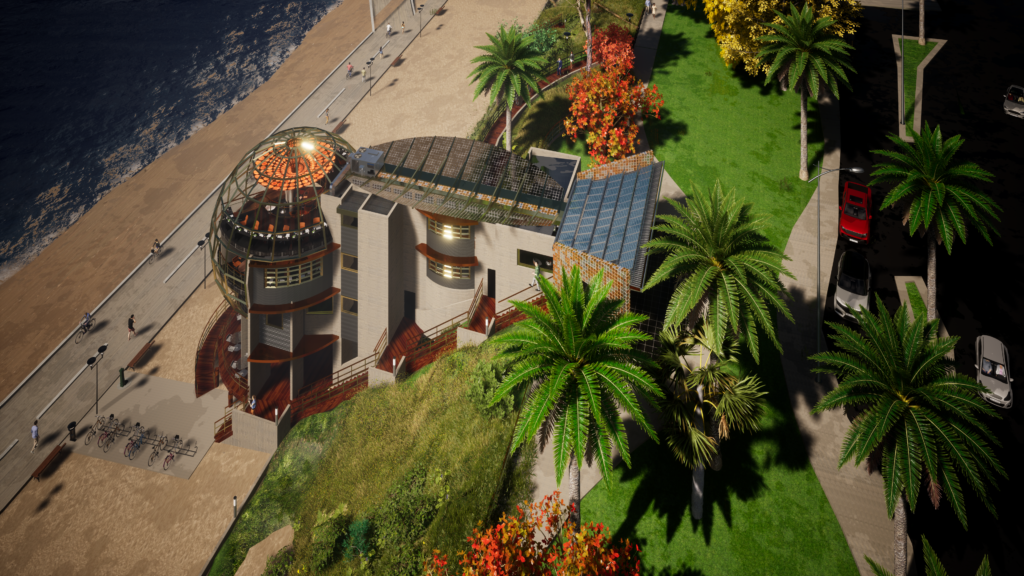
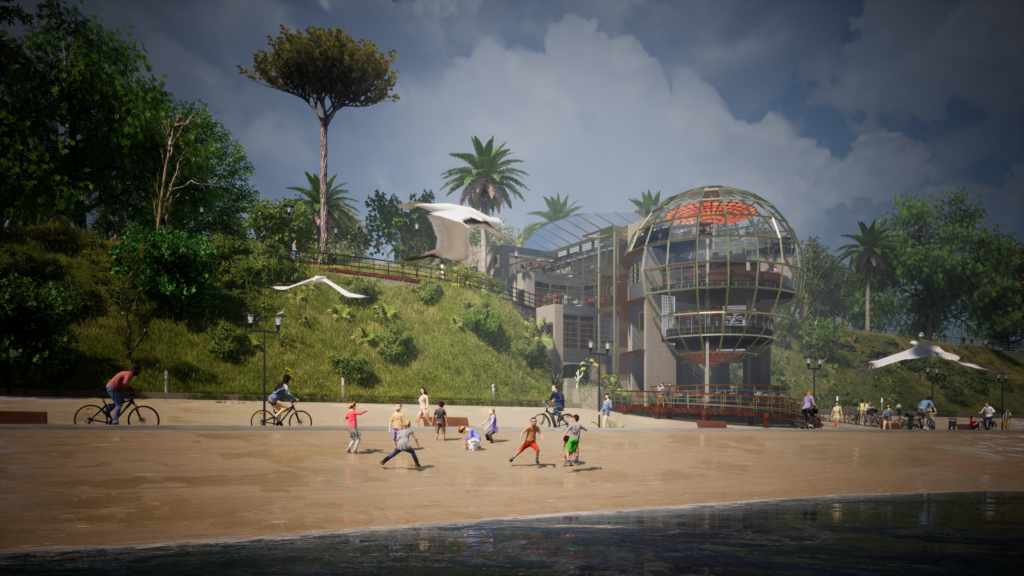

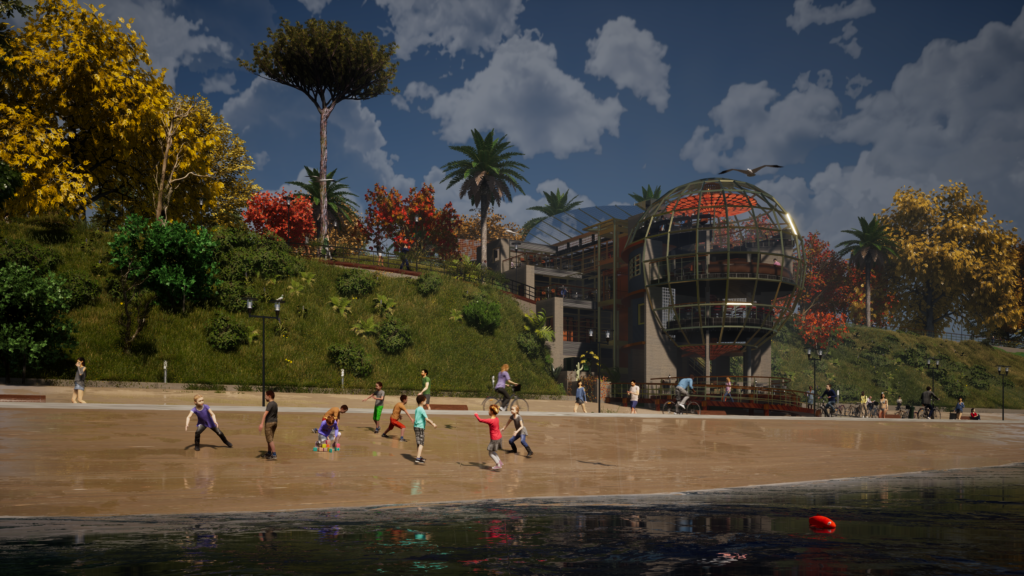

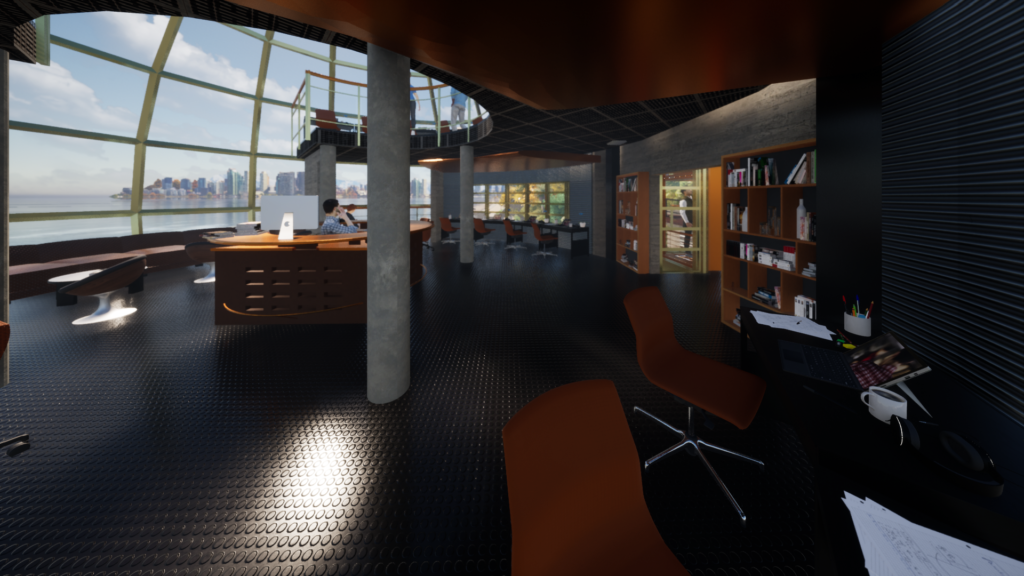
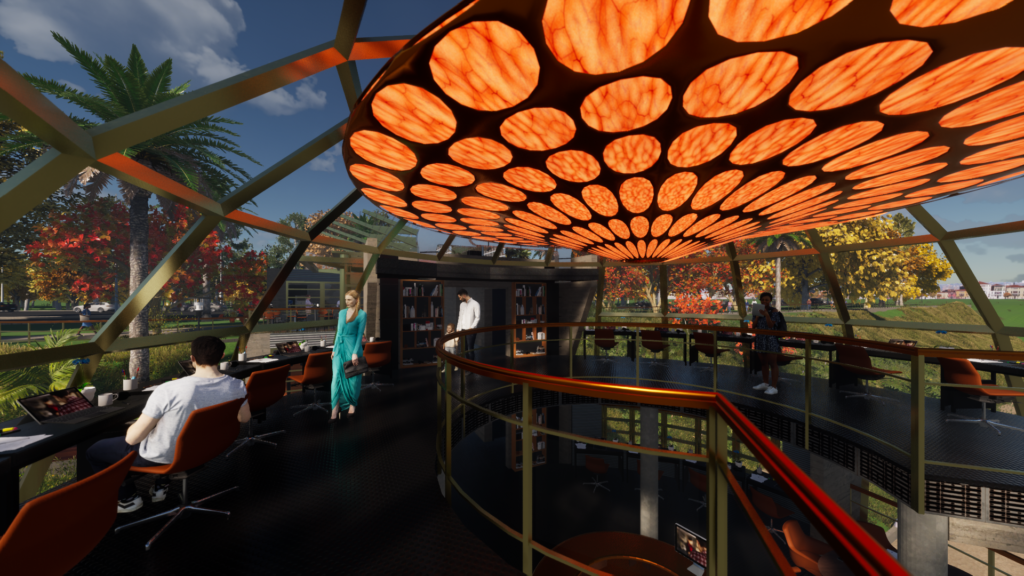


Lotus Flower
Innovation an Architecture for the Sea
Foundation Jacques Rougerie
2 Institute de France – 2020 Contest
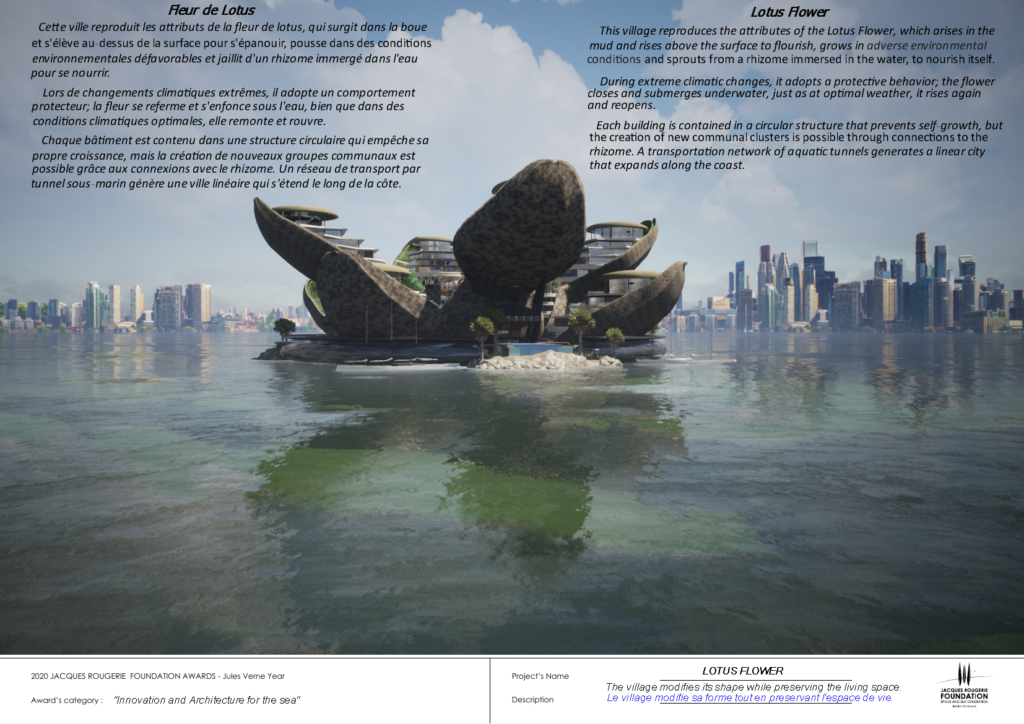
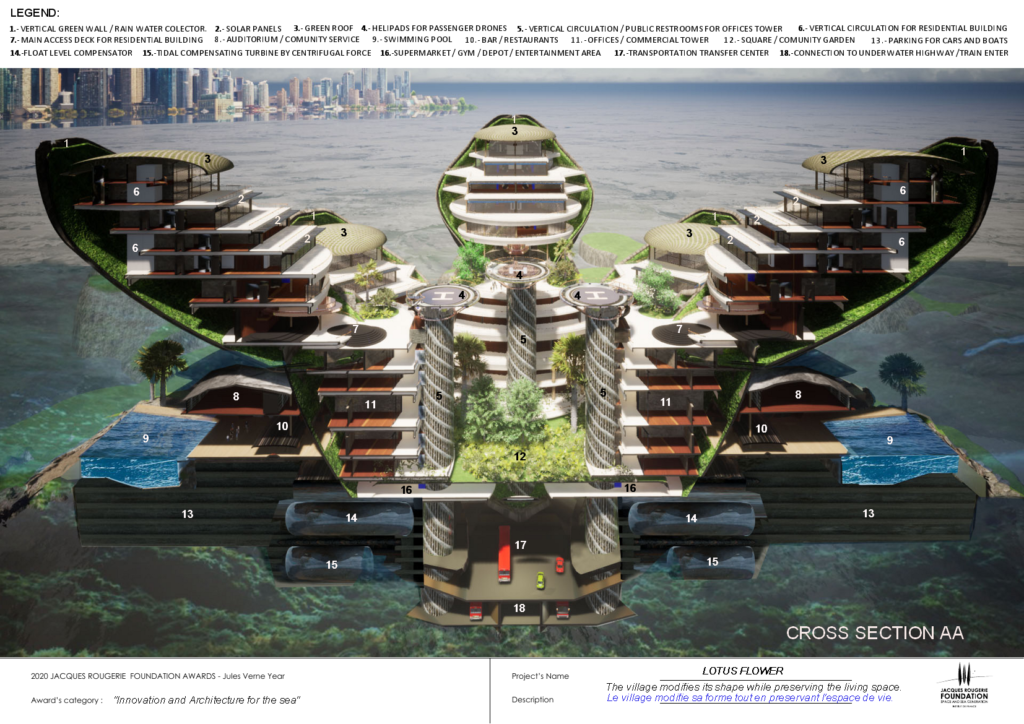
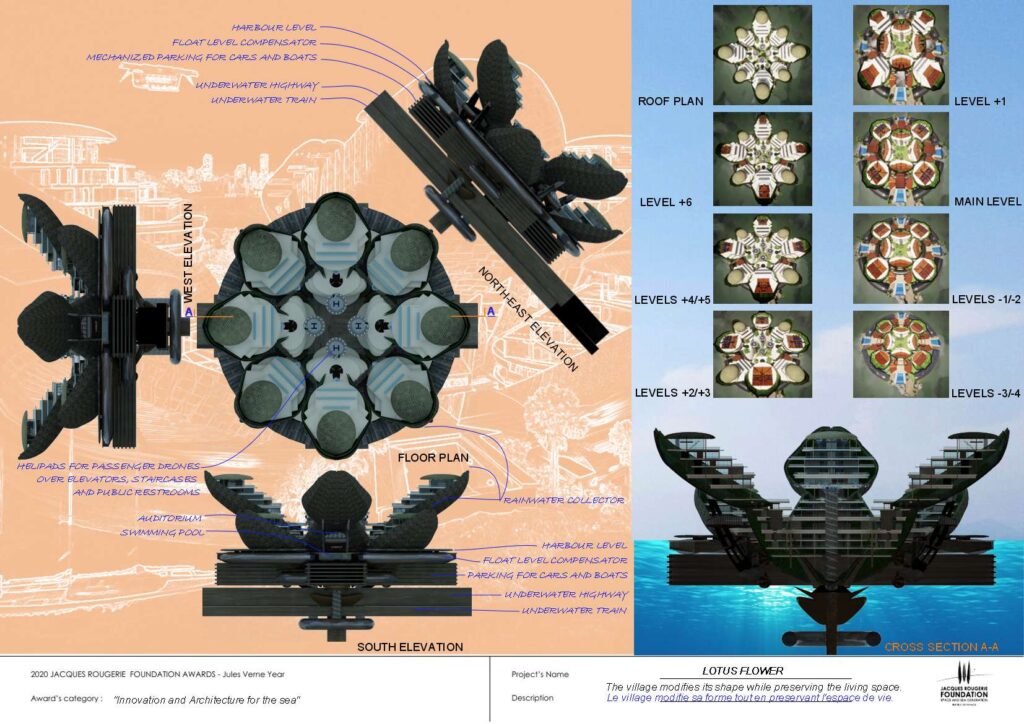
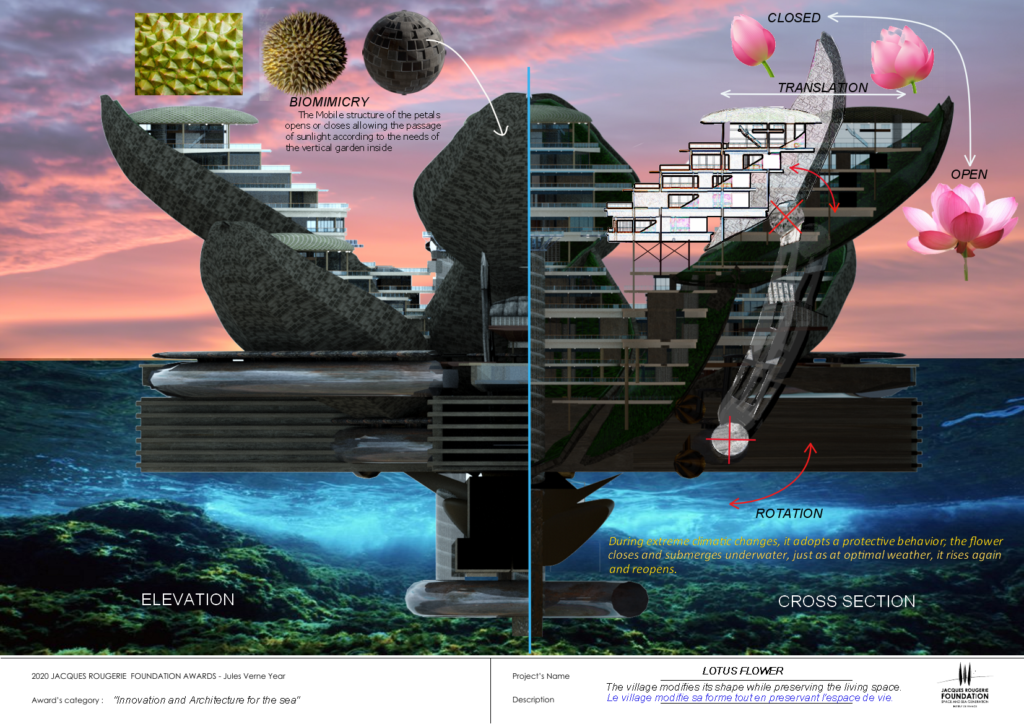
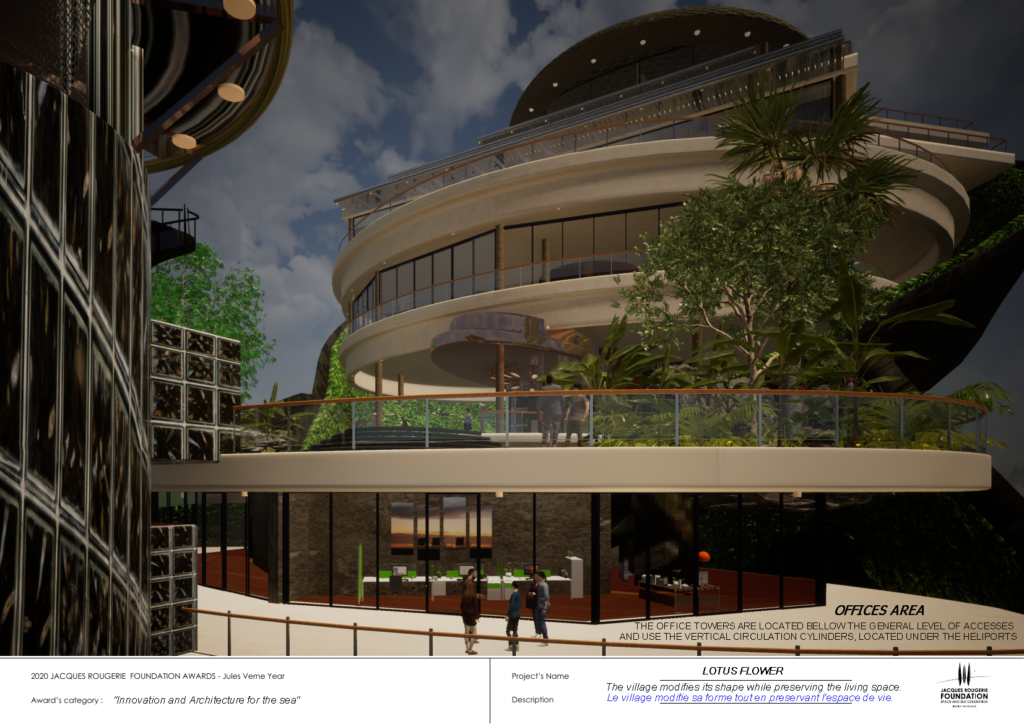
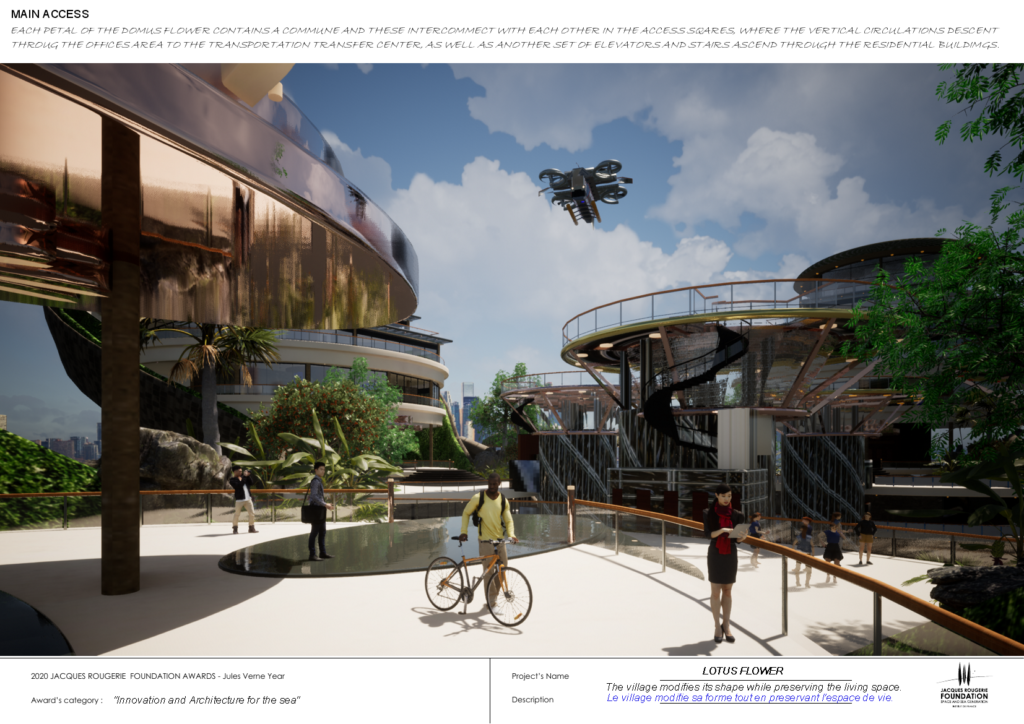
Beach Hostel Unit
Project for a Hostel La Isla Holbox. It is a small island located north of the Yucatan Peninsula in Mexico. It is accessed through the town of Chiquila located in the extreme north of Quintana Roo, approximately 2.5 hours by car north of Cancun. The BEACH HOSTEL UNIT is presented as a real and different option for all those who want to be in balance with the natural ecosystem but with the comfort of modern life. For the conception of the project, it is essential to understand who it is aimed at, which is why it must have Smart House characteristics, which satisfy any basic activity of young travelers. The project was carried out within the framework of an AG360 International Ideas Competition, which was suspended when it had almost concluded, so I decided to continue it as an object of research.
House of the Argentinean Provinces
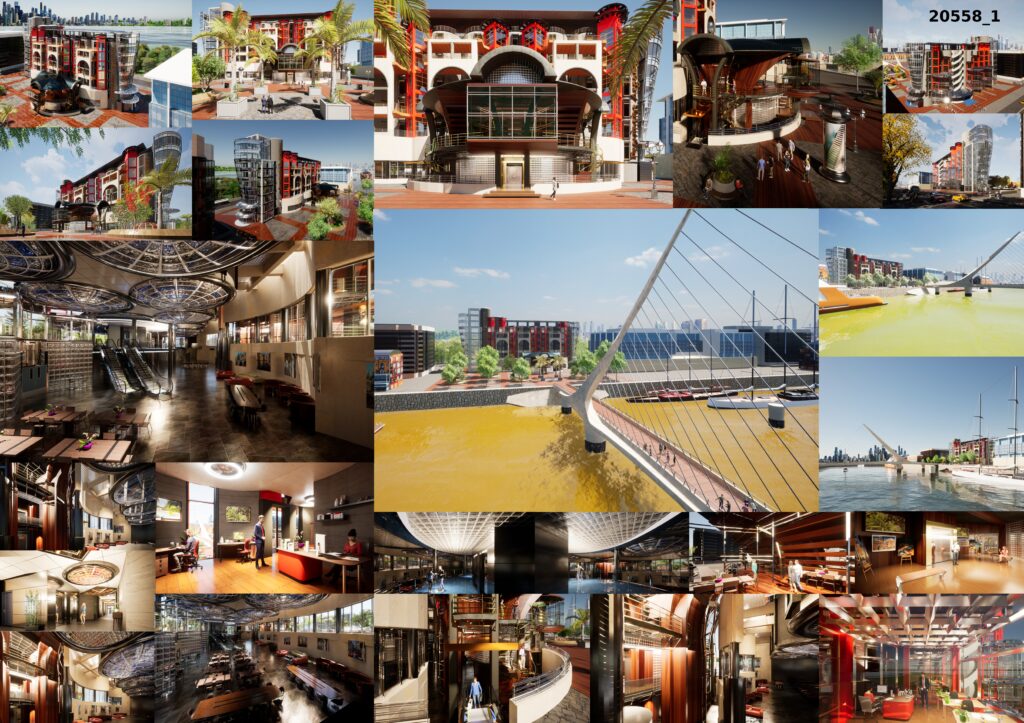

House of Argentinean Provinces
Buenos Aires city has an important civic axis along Avenida de Mayo, including the Congreso de la Nación, the Plaza de los Dos Congresos, the Cabildo, Plaza de Mayo, and the Casa de Gobierno. The conceptual extension of this axis towards the Rio de la Plata through the Puente de la Mujer, and the Plaza Reina de Holanda, suggests that the property assigned to this competition must have institutional use.
The location of the -proposed- House of the Provinces is thus conceived to reinforce the concept of the federal country, supported by the National Constitution.
This will be a permeable public building with open spaces such as terraces and plazas plus a multi-height lobby for events.
The style symbolically combines the old building with advanced intelligent contemporary design.
It will contain office spaces for each of the country’s provinces, as well as shared use areas, such as exhibition centers, conference rooms, meeting rooms that can be used to develop trade, tourism, folklore, culture, and the regional gastronomy where each province will have the opportunity to culturally and economically extend to the world, given that Puerto Madero has always been the point of international attraction, due to the radial organization of the routes, the railway lines and even the mouths of the rivers which are distributed towards this point. As a result, the House of Provinces will become a portal where they can finally have their international significance in a more equitable way.
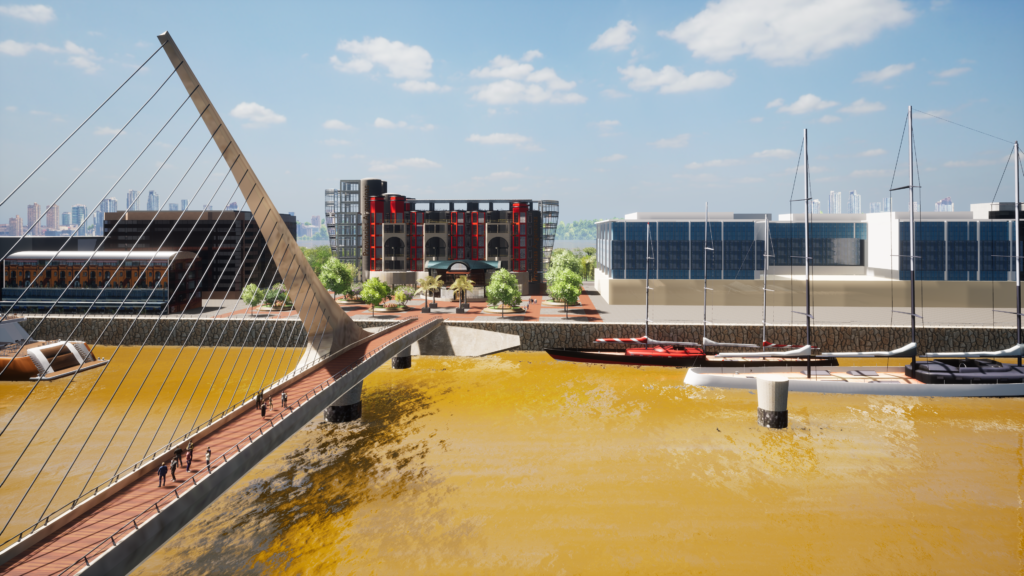
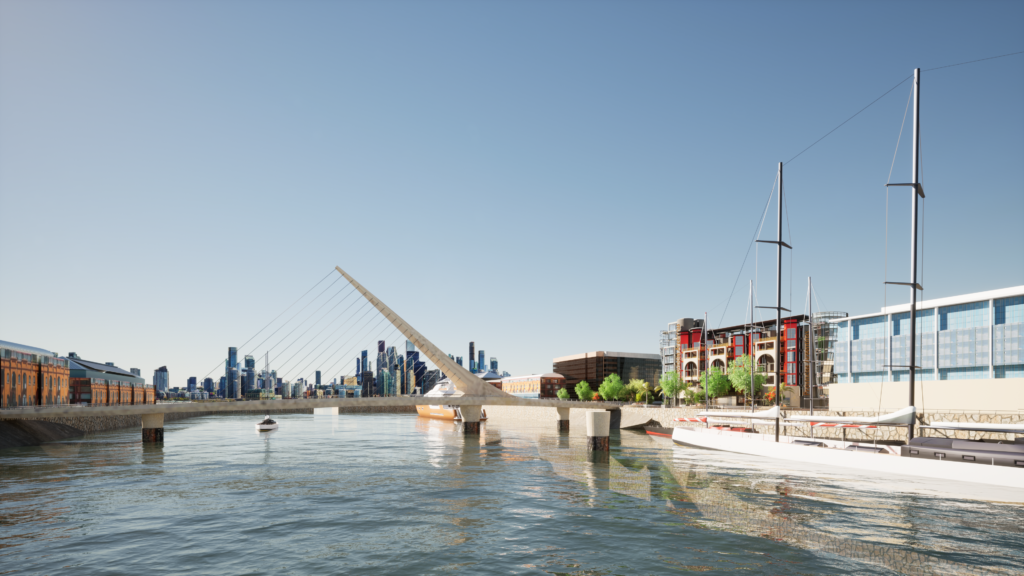
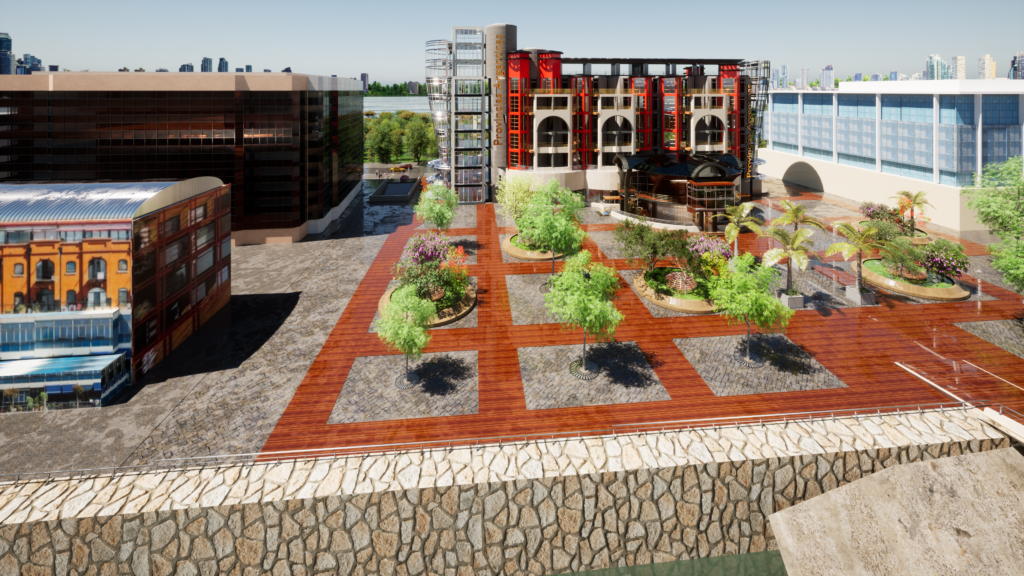
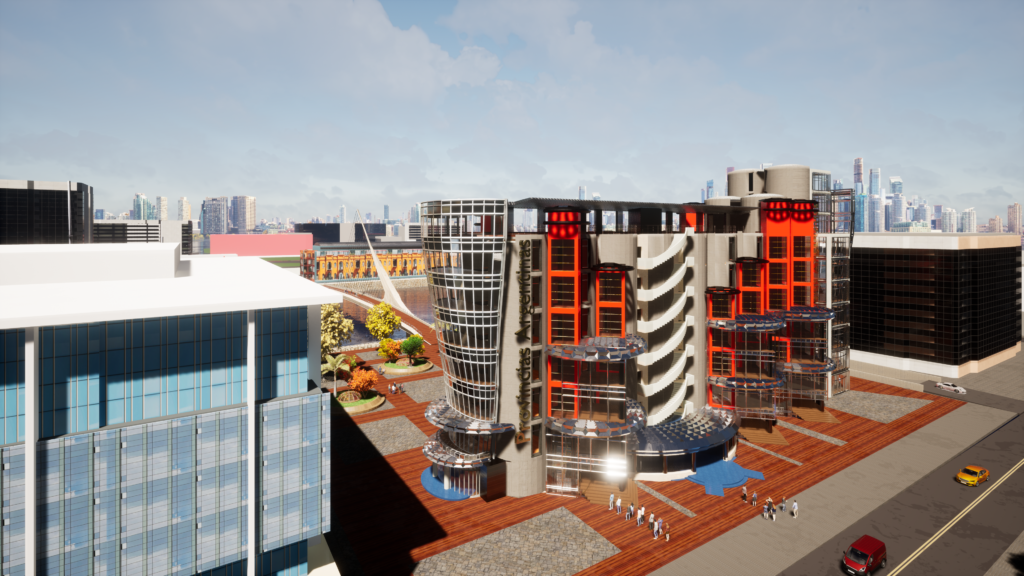

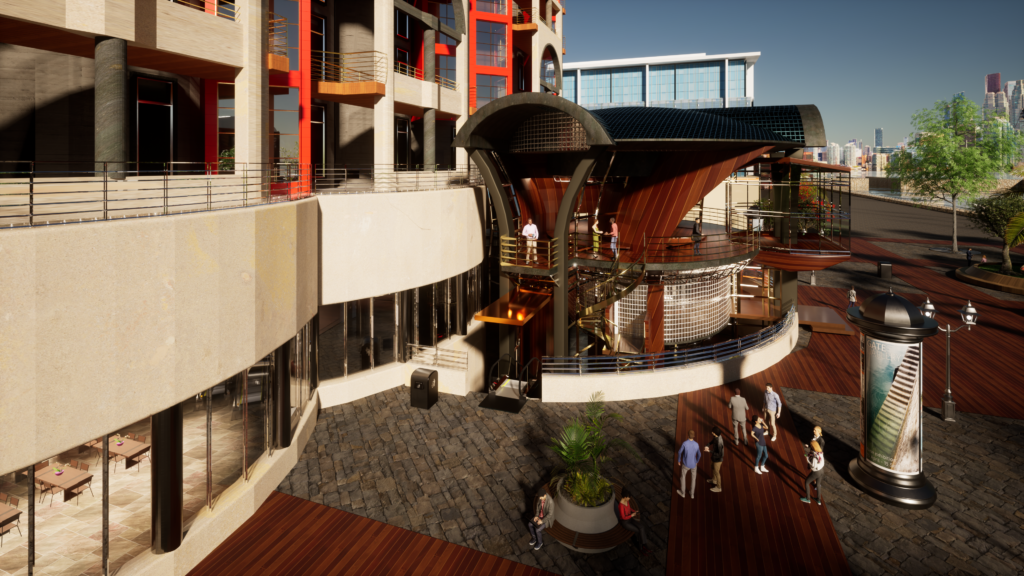
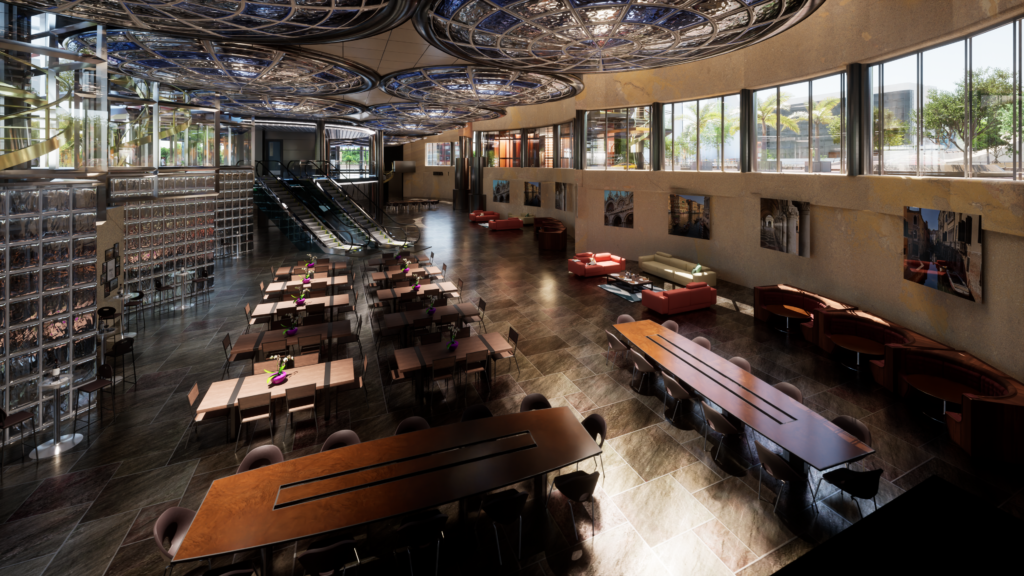
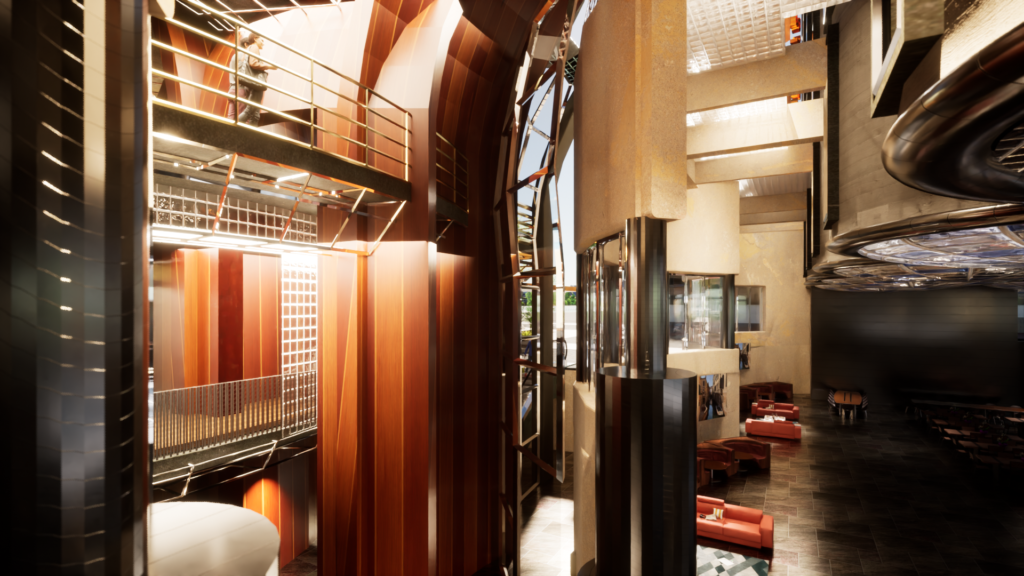
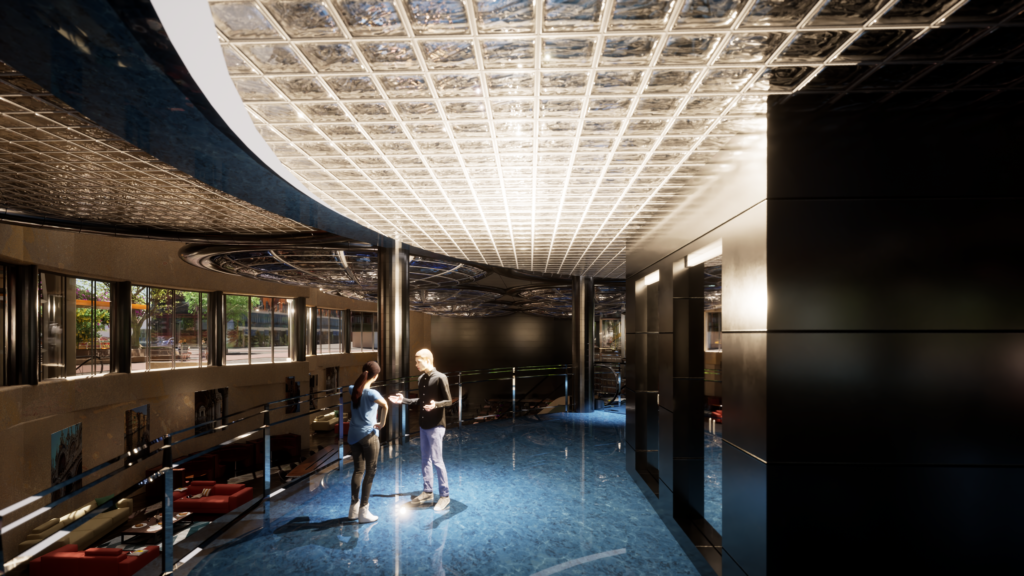
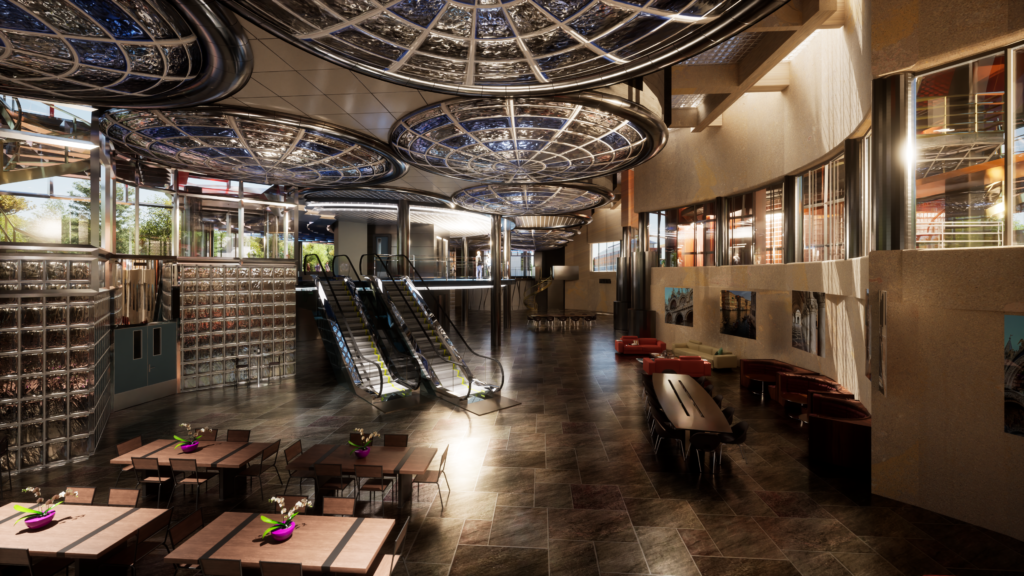
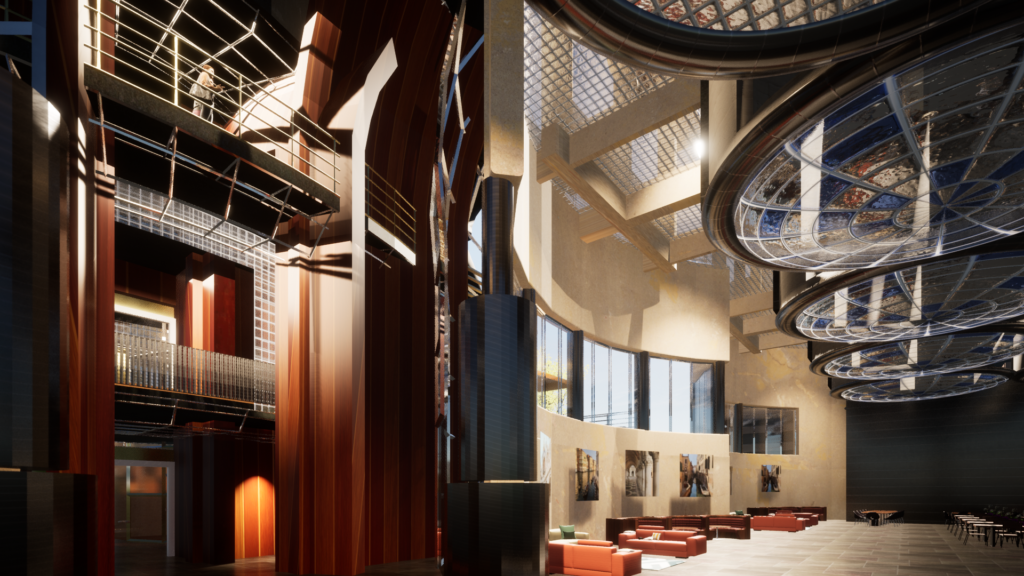
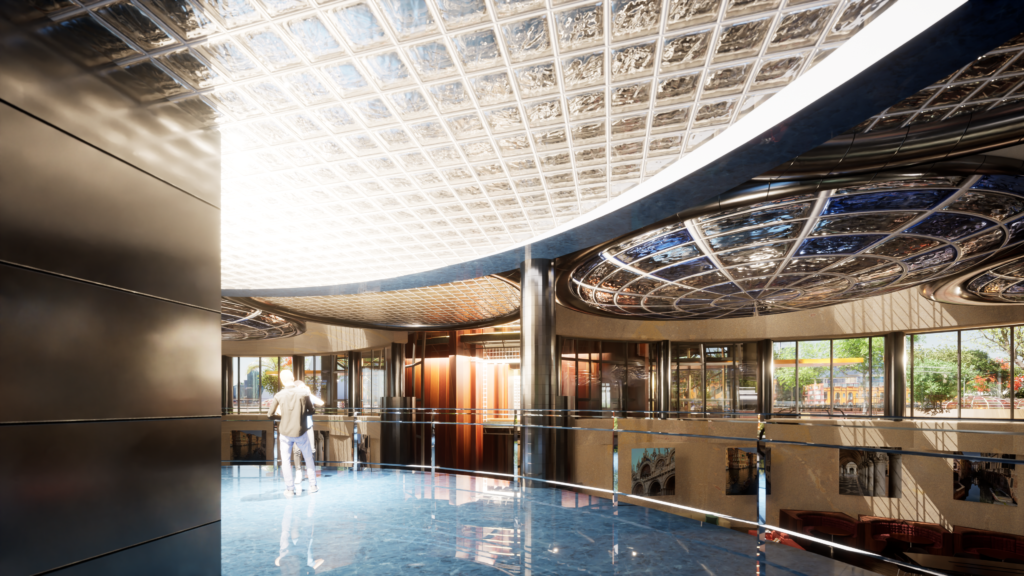
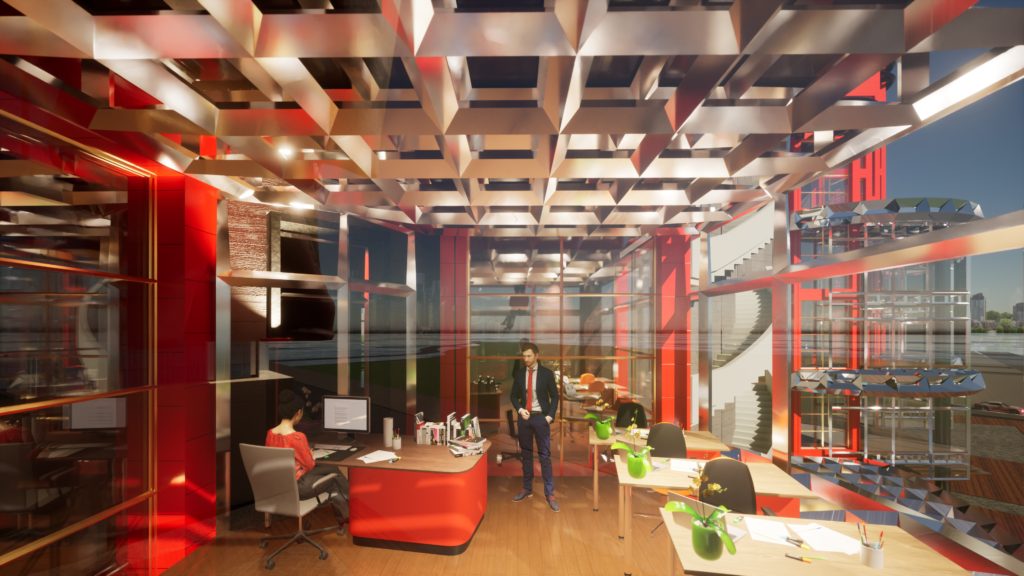
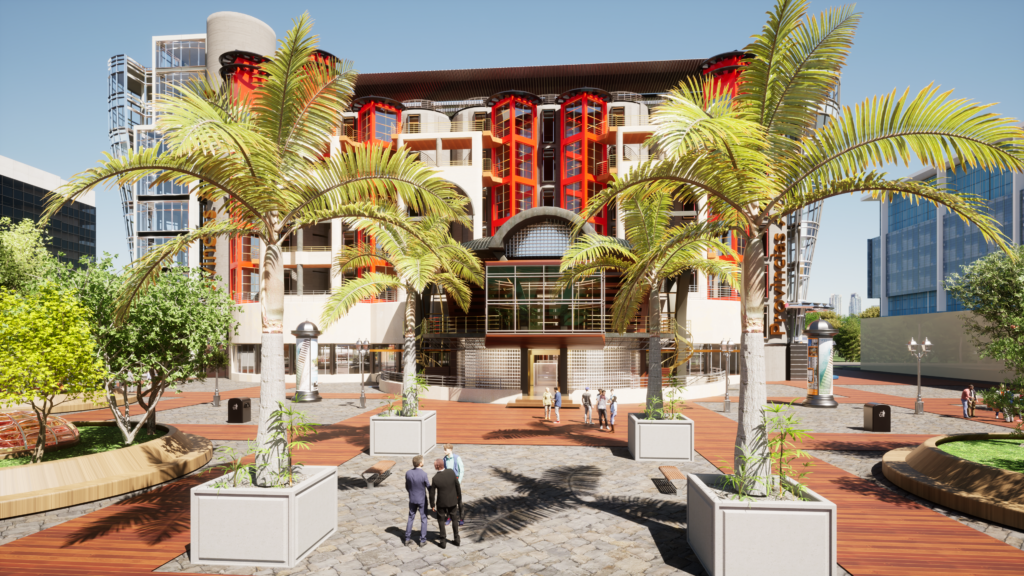
Micro Housing Project
The building consists of 4 towers with 8 double-height lofts with a mezzanine each. The vertical access core contains the exterior stairs and the elevator shaft, fully glazed to give the sensation of transparency that communicates with the concrete towers through wooden decks that configure the access terraces. The idea is to avoid long horizontal circulations by replacing them with access plazas, as in the “Hanging Gardens of Babylon.
